The Alaskan Malamute is a powerful sled dog known for its endurance and strength. With its thick coat and striking appearance, the Malamute also comes with a range of different coat colors.
Alaskan Malamute Face Markings
First, take a look at typical Alaskan Malamute markings and their breed-specific names. We recommend that you familiarize yourself with these markings to make them easier to recognize.
Ready?
Alaskan Malamutes often have some pattern covering the top of the head and ears ending in a pointed widow’s peak in the center of the forehead. In Malamutes, this is called a cap.

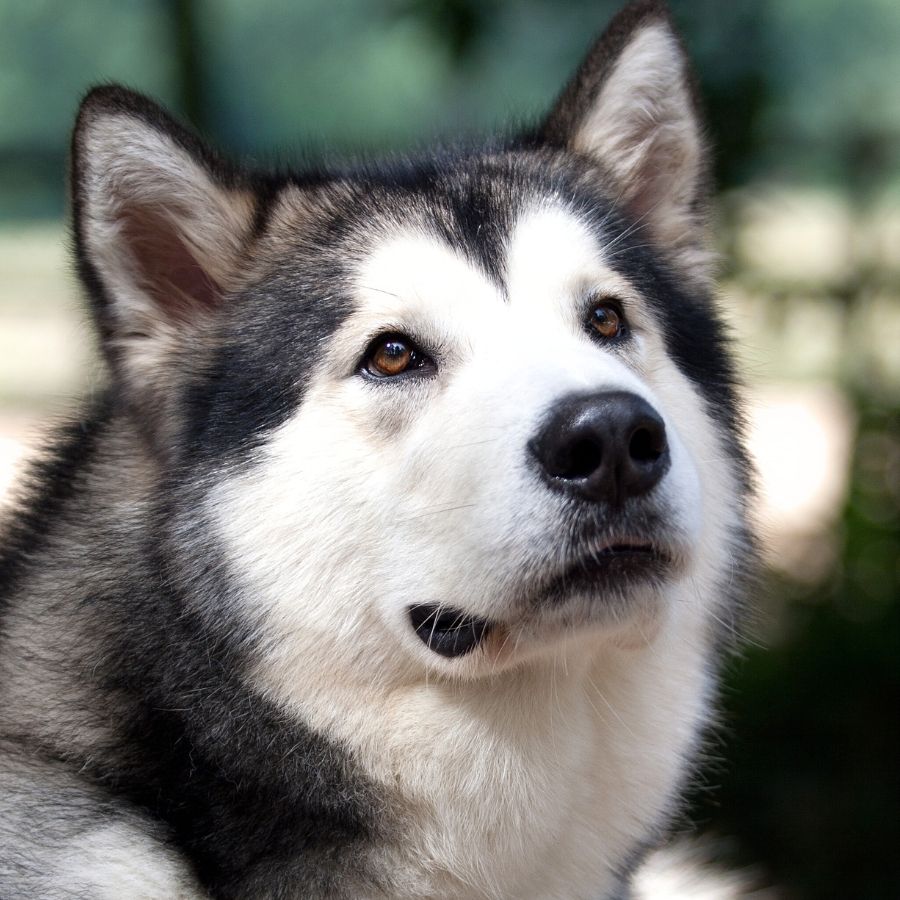
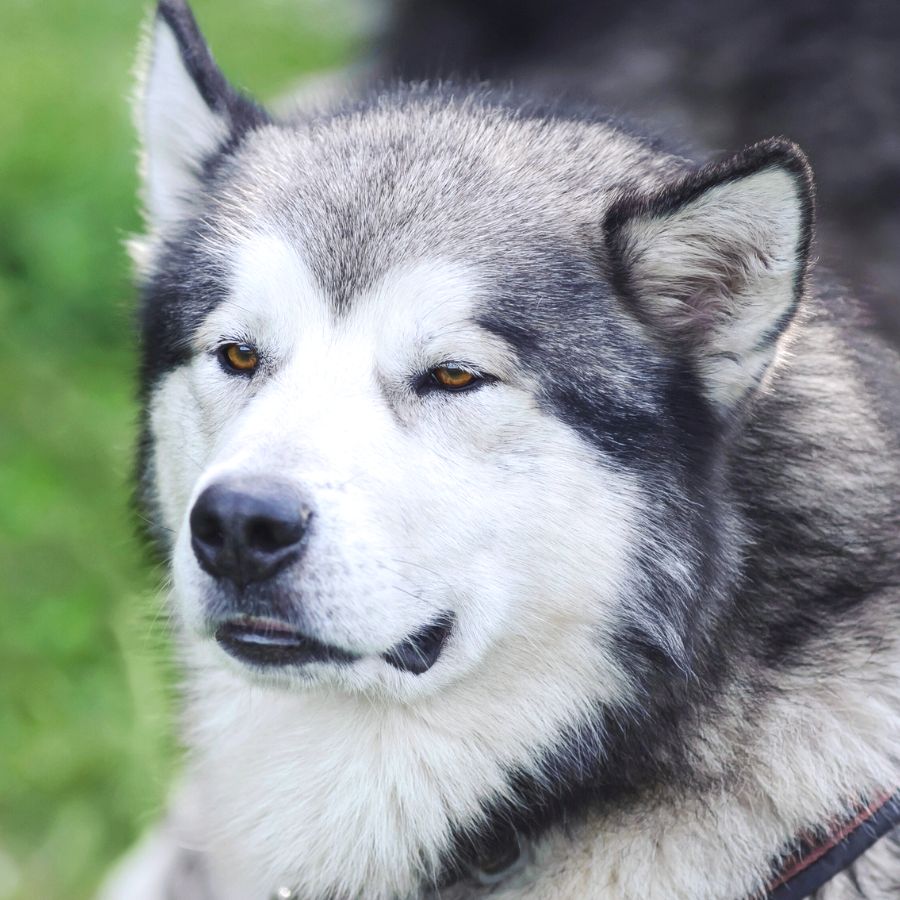
When Malamute people talk about eye shadow, they mean the dark markings under the eye that do not quite extend out or connect to the cap.
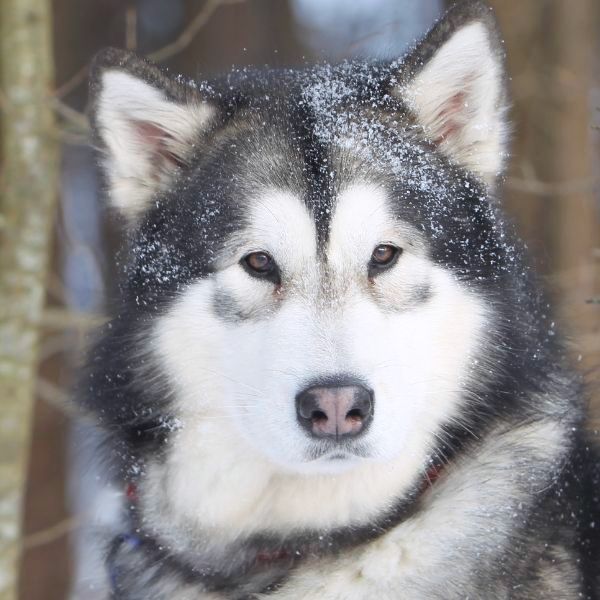
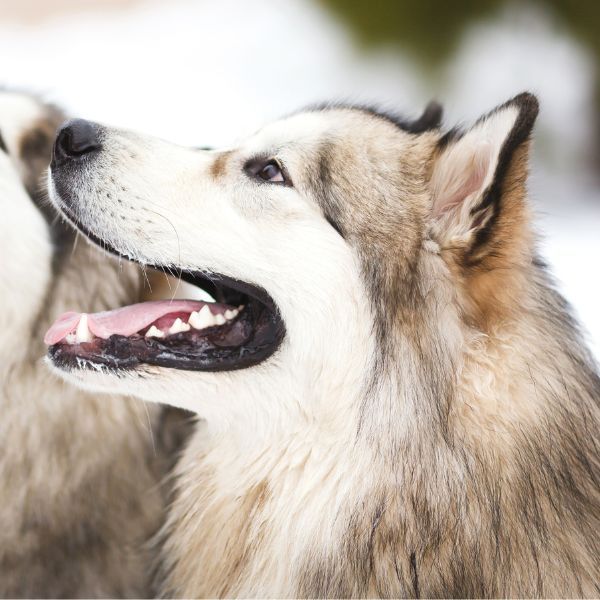
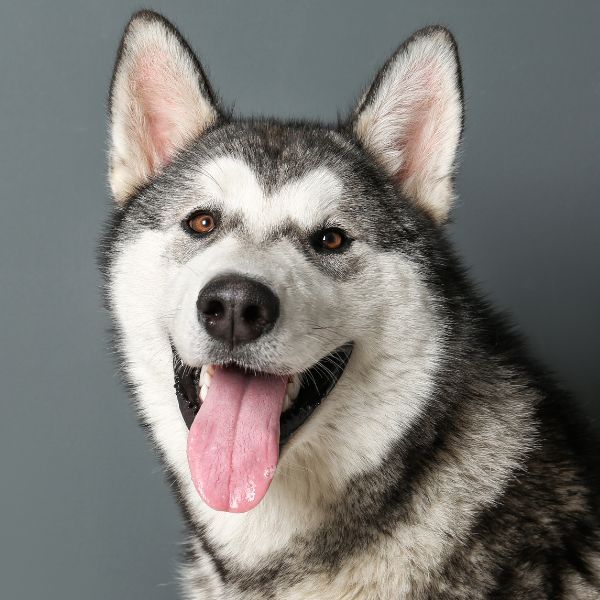
But if the eye shadow Malamute markings extend sideways and connect to the cap and form circles around the eyes, they are called goggles.
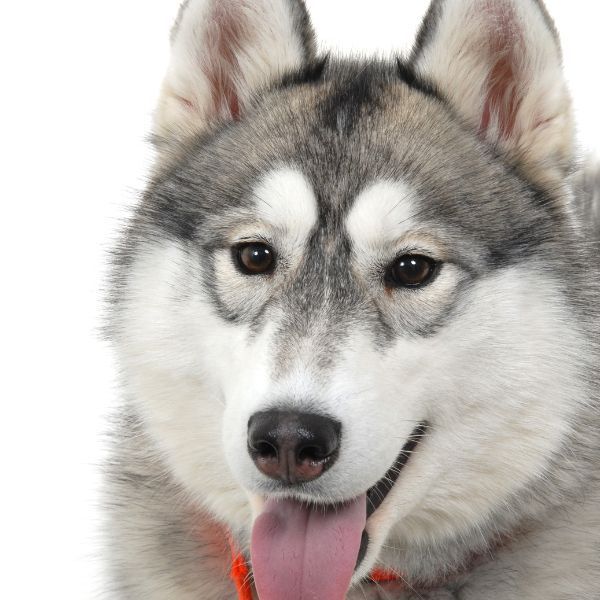
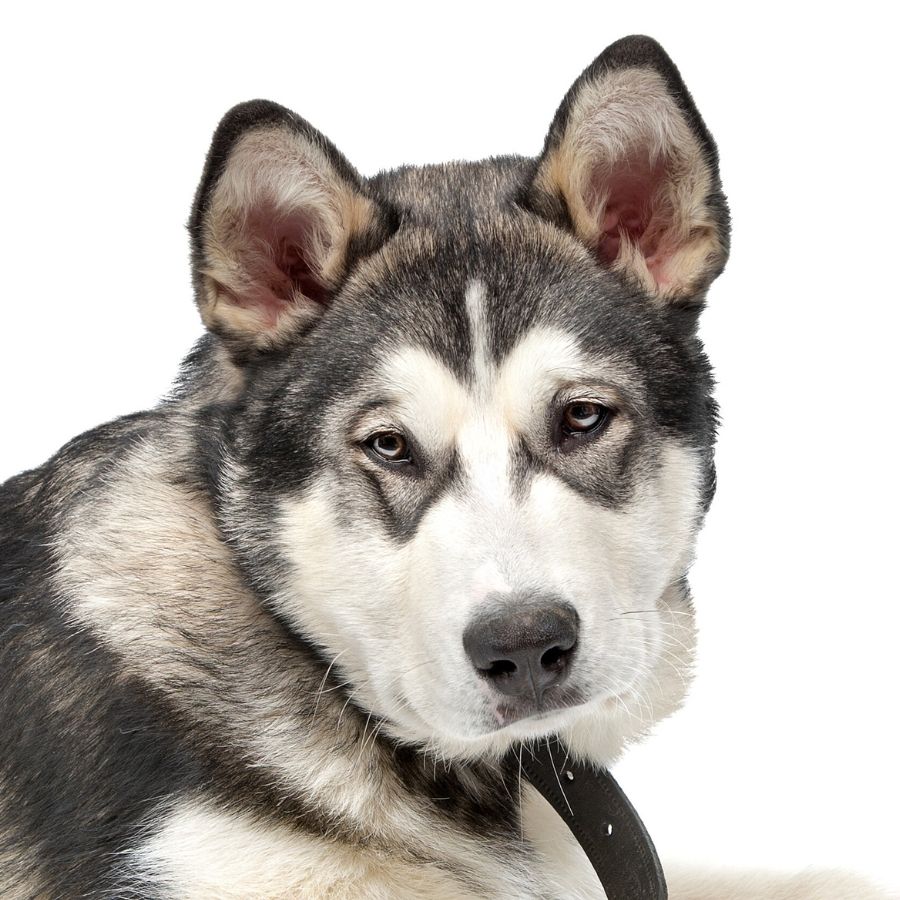
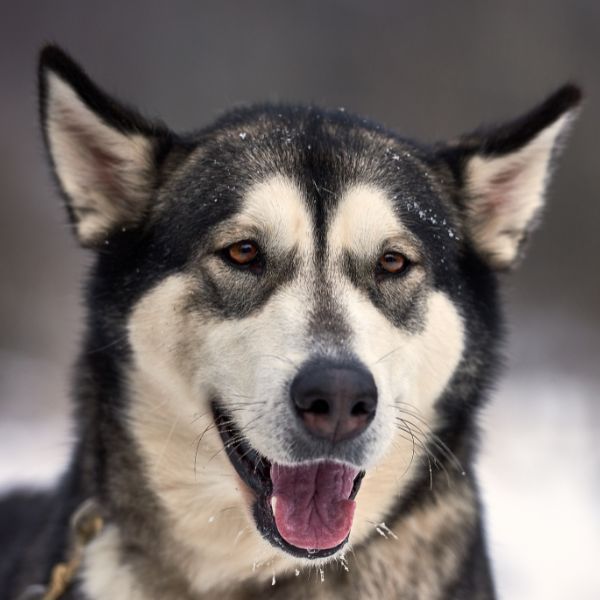
The term nose bar refers to a dark or banded stripe of coat down the nose.

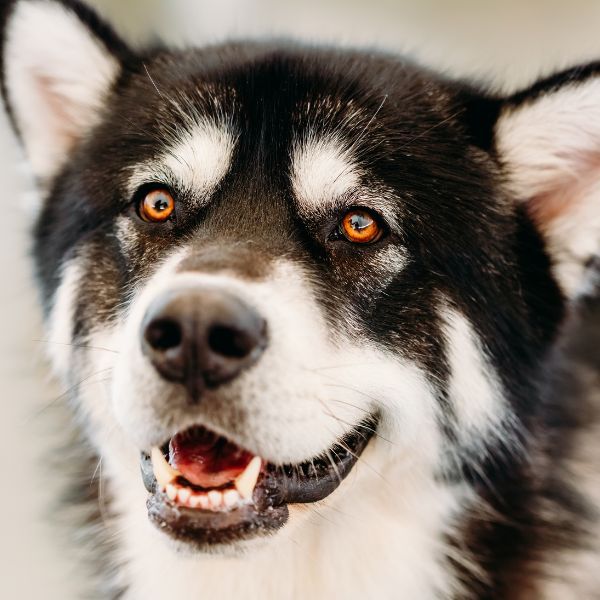
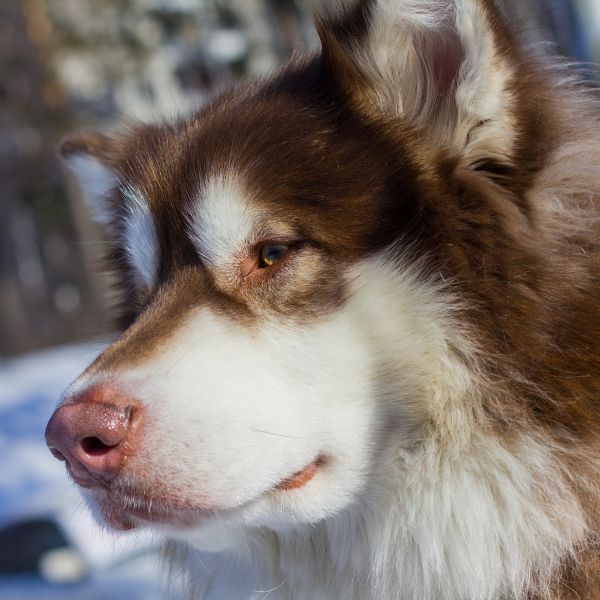
Depending on the amount of white and distribution of pigmented areas on the face, Alaskan Malamute folks distinguish between various possible names for Malamute “masks“:
Open Face means the dog has no other markings on the face than his cap. This refers to an all-white face pattern with little to no pigment under the eyes.
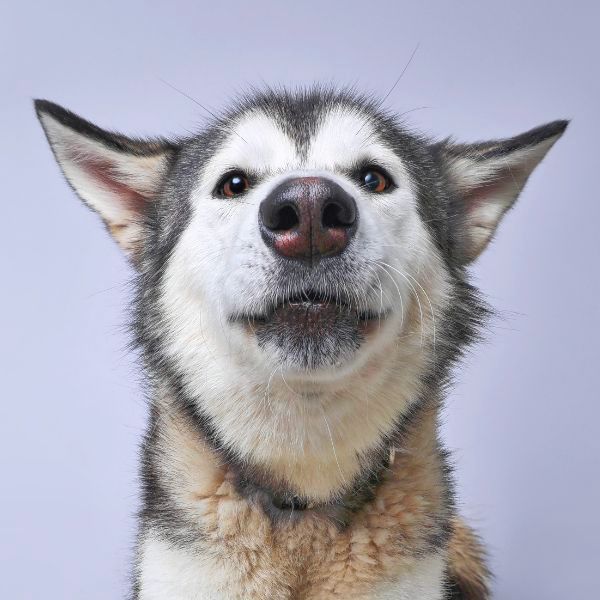
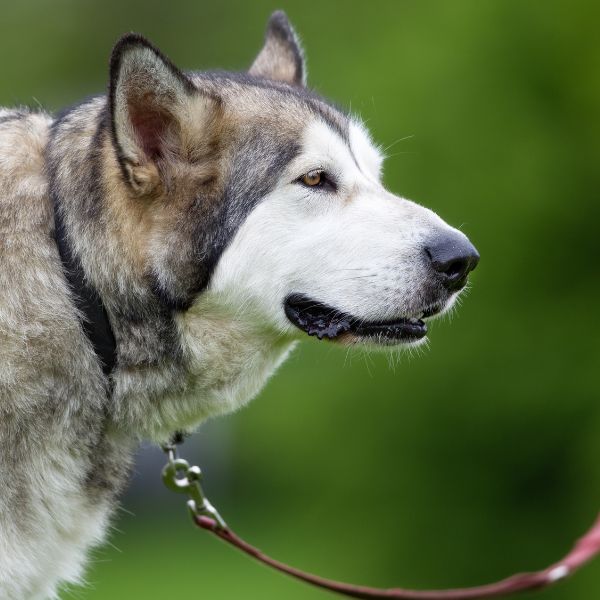

Mask refers to a dog with a combination of a cap and goggles but no nose bar.
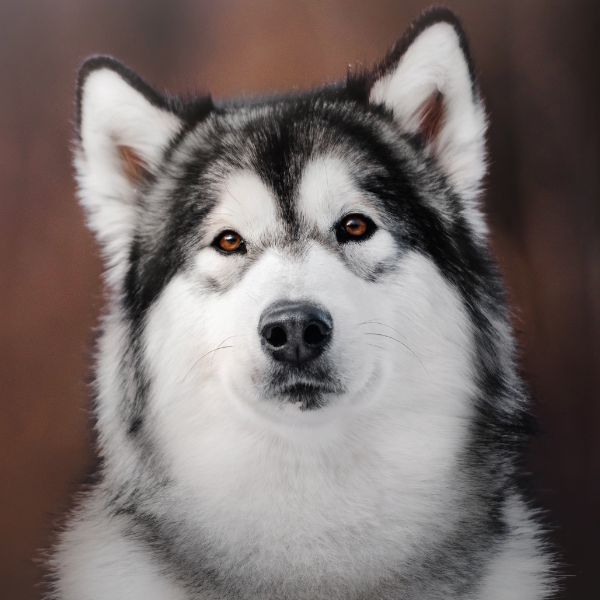
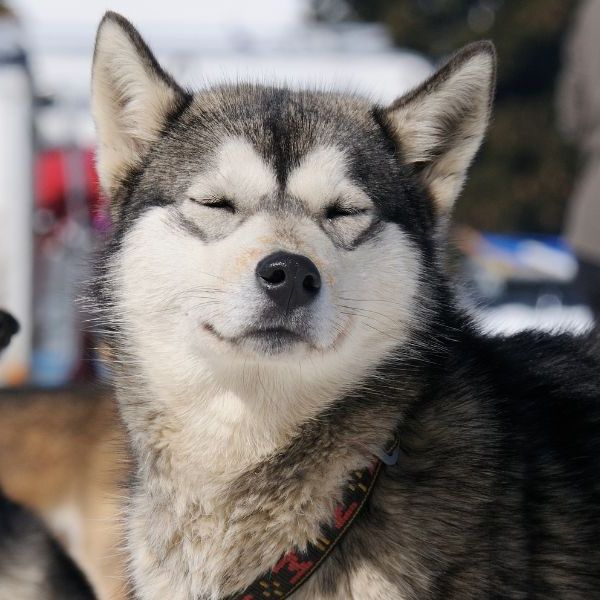
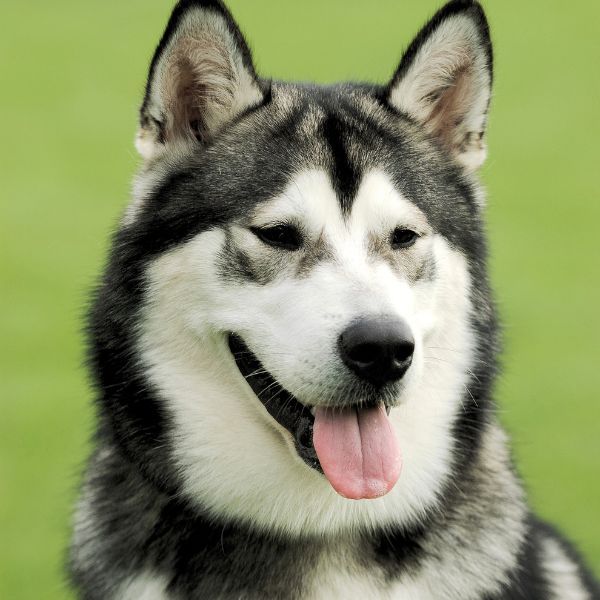
Dogs with a Full Mask have a nose bar as well as goggles and a cap.
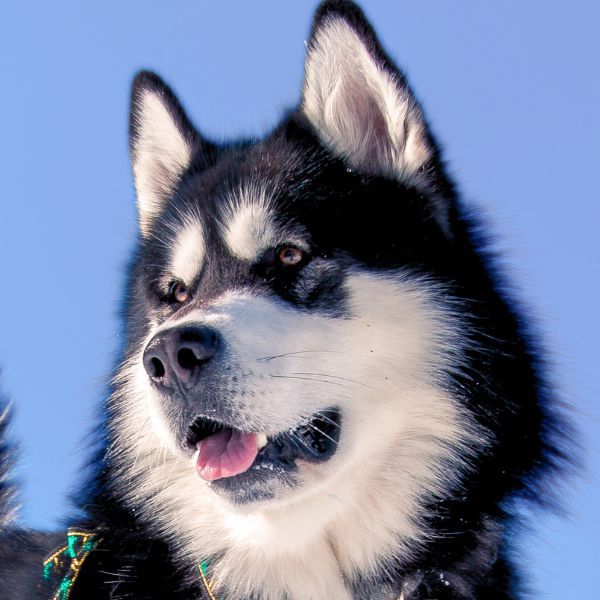
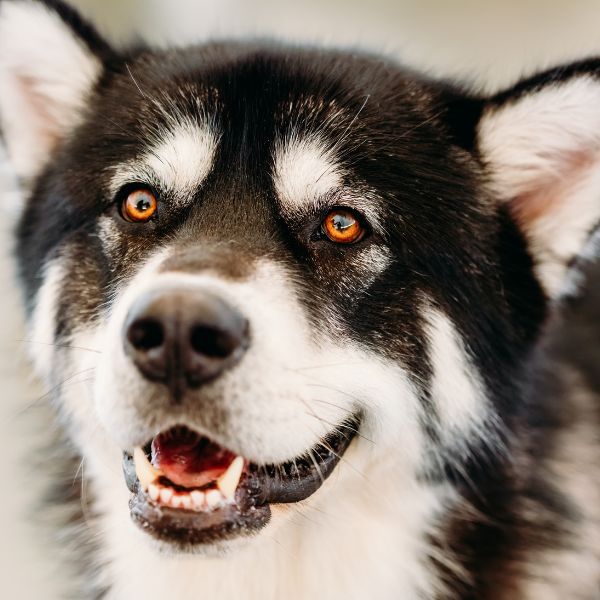

Closed Face, on the other hand, means the dog has a fully pigmented pattern without any distinct white markings on the face. This is quite rare in Alaskan Malamute.
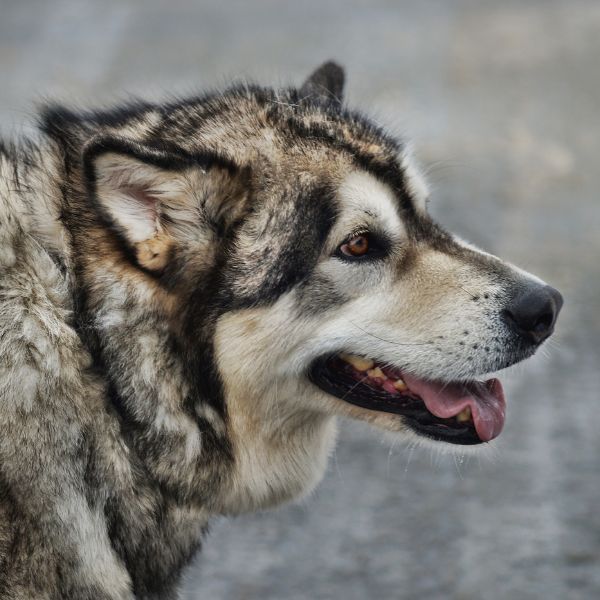
Standard Alaskan Malamute Coat Colors
Let’s have a closer look at all the typical Alaskan Malamute color patterns.
We recommend you take a look at Nichole Royers website if you want to learn about Malamute colors. Some of the information might be outdated but she has lots of images.
Agouti & White Alaskan Malamute
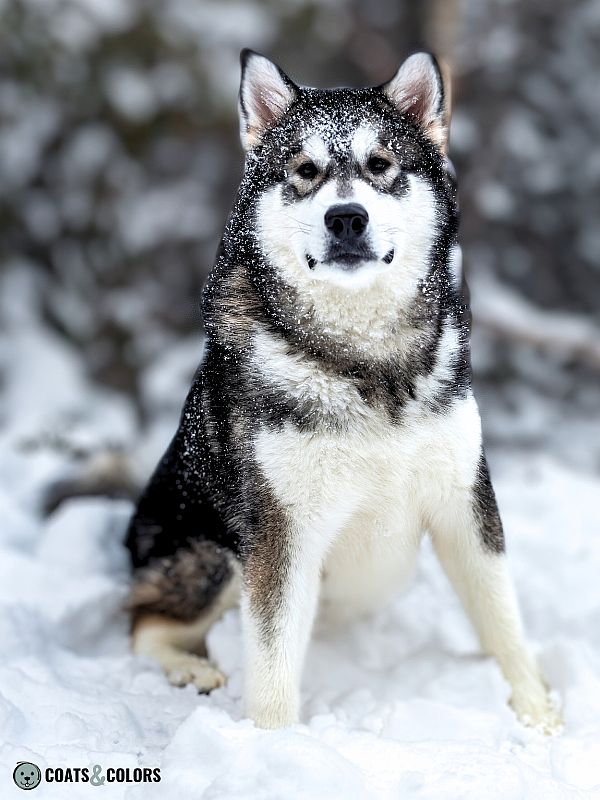


An agouti & white Alaskan Malamute has a black-based (B/- D/-) agouti pattern (ky/ky aw/-) but no northern domino allele (E/-).
Agouti causes a wild-type pattern with banded hairs along the back, nose bar and goggles. Unknown modifiers can create phenotypes from very dark to more moderate agouti patterns.
Also, dogs with an agouti pattern can be carriers for other traits at the A-Locus such as tan point carriers (aw/at) or even recessive black carriers (aw/a).
Since the A-Locus alleles show incomplete dominance, this can cause intermediate phenotypes such as an overall darker agouti pattern or an increase in dark facial markings.
Agouti Malamutes often have very light cream or off-white phaeomelanin.
But they don’t have extended white face markings such as an open face and they do not have white undercoat which would both be signs of domino at play.
At birth, agouti & white Malamute puppies have a very dark sooty look to them with very little if any white on their faces (“mud-faced“). With time their pattern can lighten to some degree.
Adult agouti & white-patterned dogs can sometimes resemble a dark gray & white dog (which would be an agouti + domino in genetic terms). But gray dogs will show signs of domino like large pale facial markings at birth while true agouti-patterned dogs will have a full mask.
Gray & White Alaskan Malamute
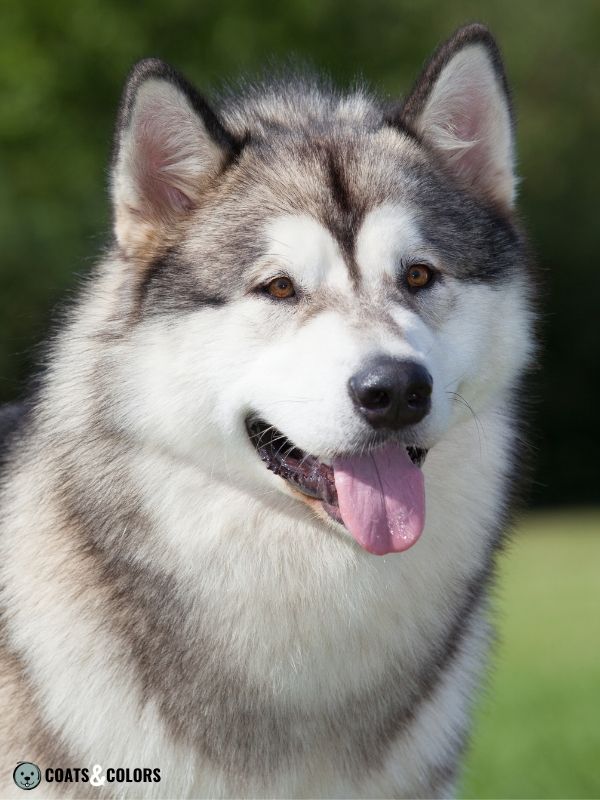

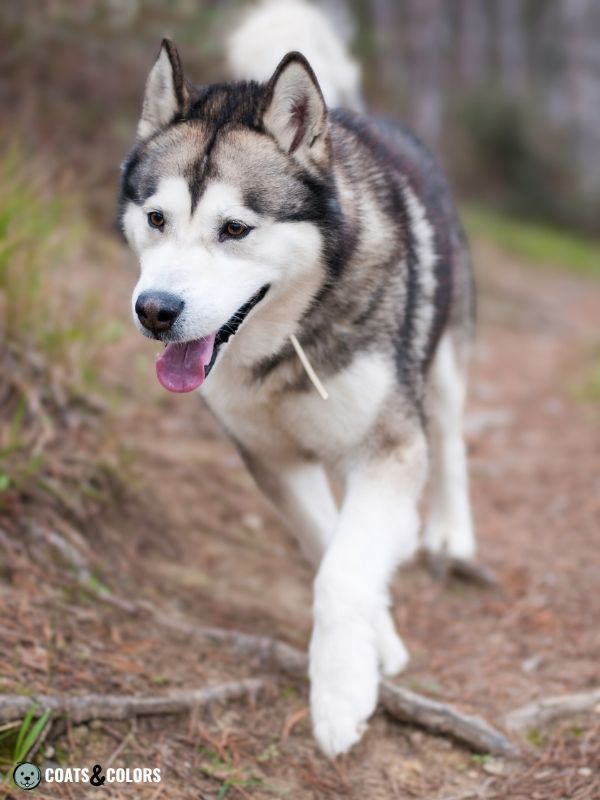


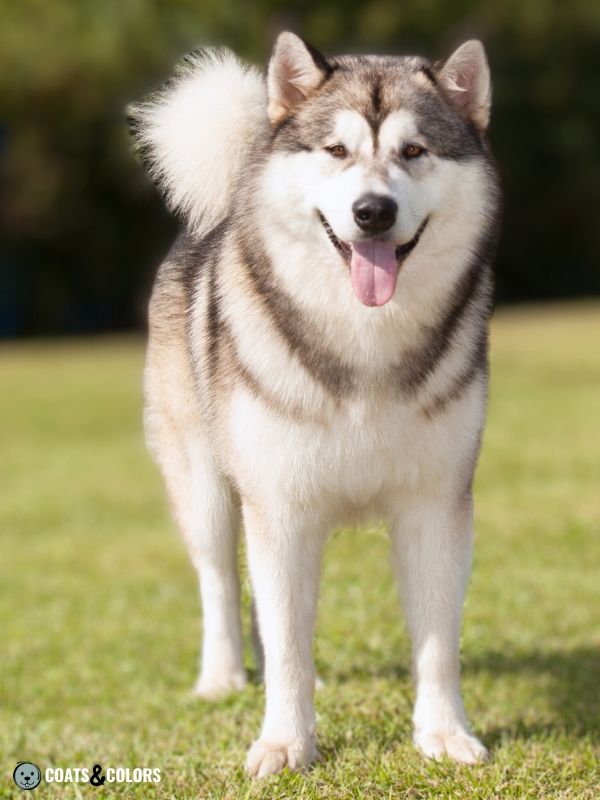
A gray Alaskan Malamute has a black-based (B/- D/-) agouti pattern (ky/ky aw/-) plus northern domino (eA/-). A more correct term for the Alaskan Malamute color “gray & white” would be agouti domino. Domino reduces the amount of eumelanin and increases the amount of phaeomelanin in the agouti pattern.
At birth, Alaskan Malamute gray and white can look much like normal agouti. But gray and white puppies have large white eye pips and crisp pale face markings. Additionally, the domino allele reduces much of the dark hairs and sootiness from their agouti facial markings.
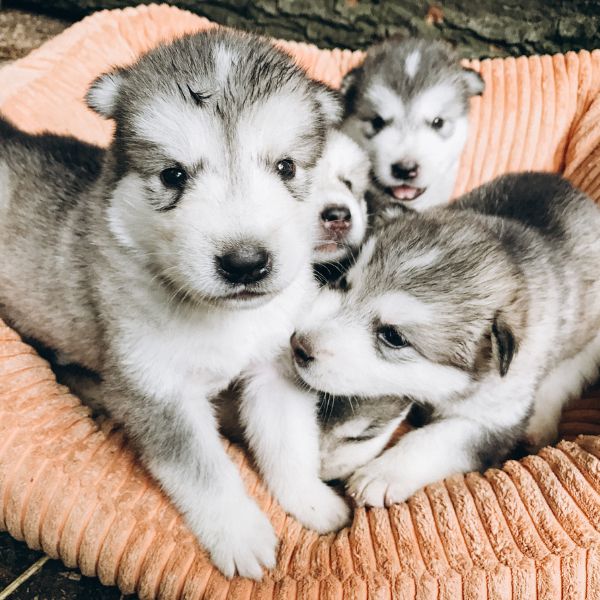
Some, but not all, dogs expressing domino have a pink stripe down the nose.
Another telltale sign of domino at work is the extended phaeomelanin banding at the base of the coat and severely reduced eumelanin banding except along the topline. Individual hairs may be light with only a black tip and little or no actual banding.
Typically, agouti domino creates an overall grizzled appearance with a reduced amount of dark-pigmented areas when compared to agouti & white. Typically the most black pigment is maintained around the saddle area of the dog.
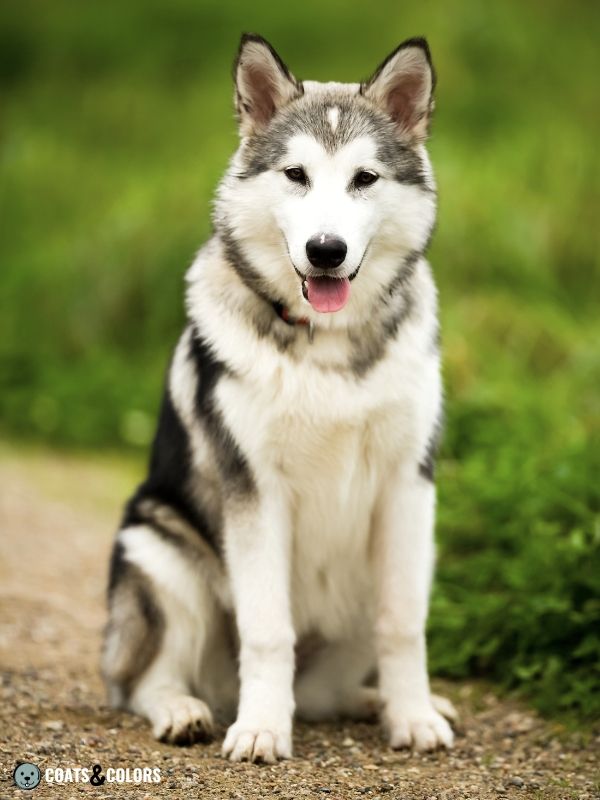
All in all, this creates the impression of gray guard hairs on the body with some more heavily black-banded or solid black hairs on the dorsal topline.
Most Alaskan Malamutes already have a very low phaeomelanin intensity. Domino can further lighten any red or yellow pigment to cream or white. It also causes large pale facial markings from birth.
And domino lightens the undercoat in gray & white dogs to a light grey, cream, or white color.
The agouti pattern in an individual dog can be quite dark and even with the eumelanin-reducing effect of domino some dogs keep more of their black pigment or dark facial markings than others. Thus, some dark gray & white dogs may be confused with seal & white (aka tan point domino).
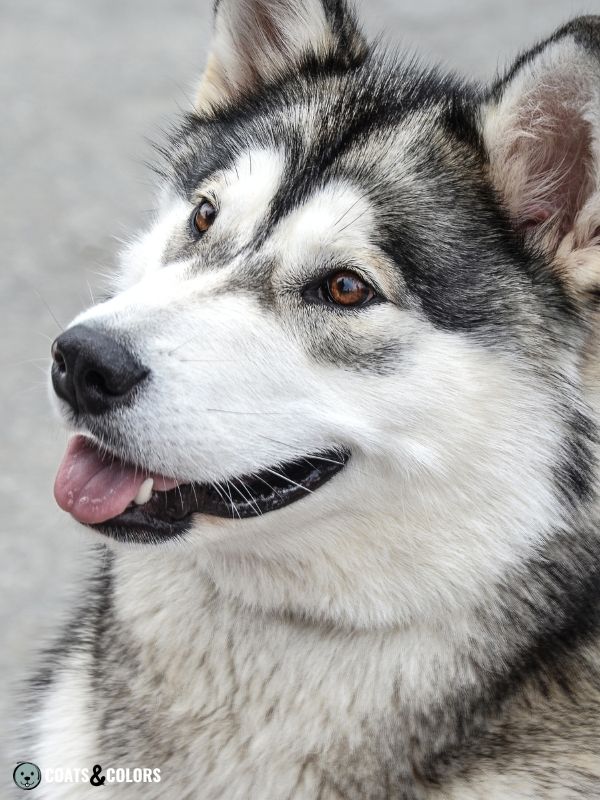
Black & White Alaskan Malamute


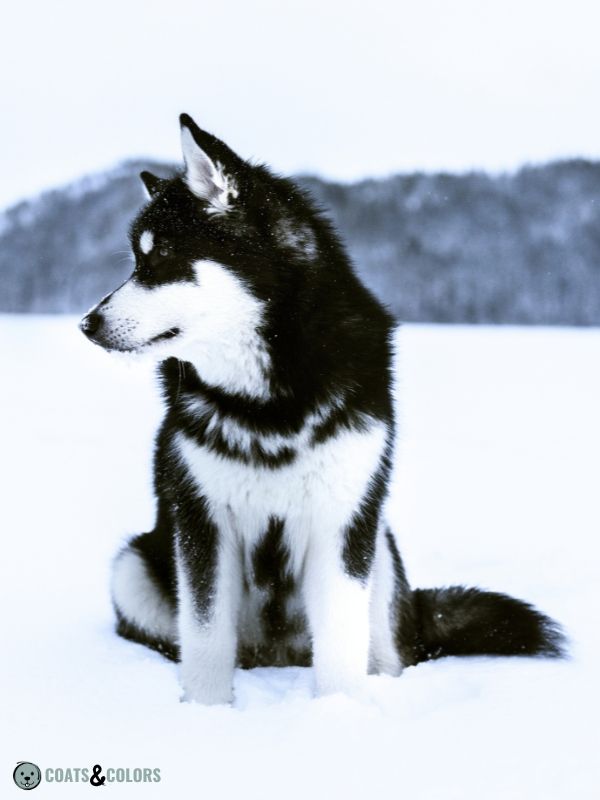
A black & white Alaskan Malamute has a black-based (B/- D/-) tan point pattern (ky/ky at/-) but no northern domino allele (E/-). Typically, they have points with very pale phaeomelanin.
Black & white is a breed-specific Malamute term used for tan points.
These dogs have a very typical black and tan pattern without a cap or any extended pale open face markings. A black and white Malamute always has extreme black masking.

They don’t just have some eye shadow or goggles. Instead, they will have solid black markings under their eyes and a solid black nose bar and not too big pale eyebrows.
Malamutes with this pattern have black guard hairs on their back and a black or dark gray undercoat. At birth, puppies with this pattern can look almost solid black with only smallish tan markings.
Seal & White Alaskan Malamute
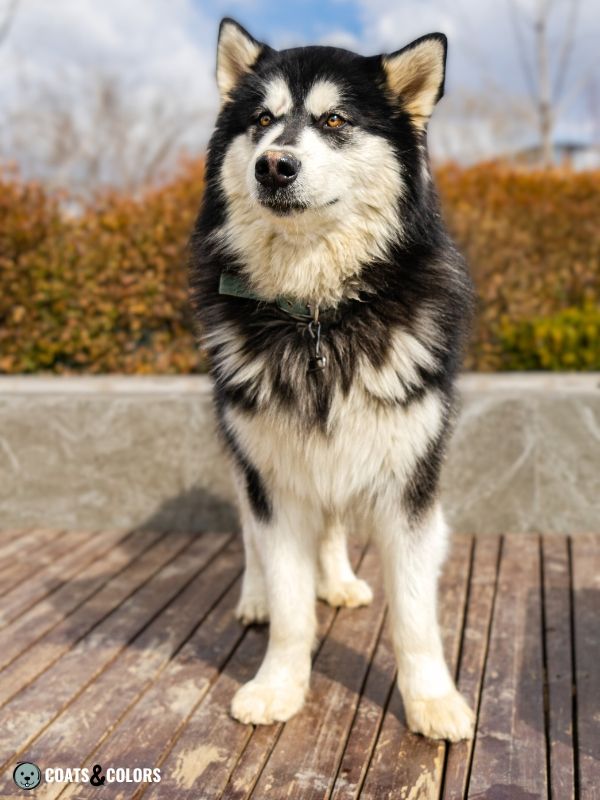

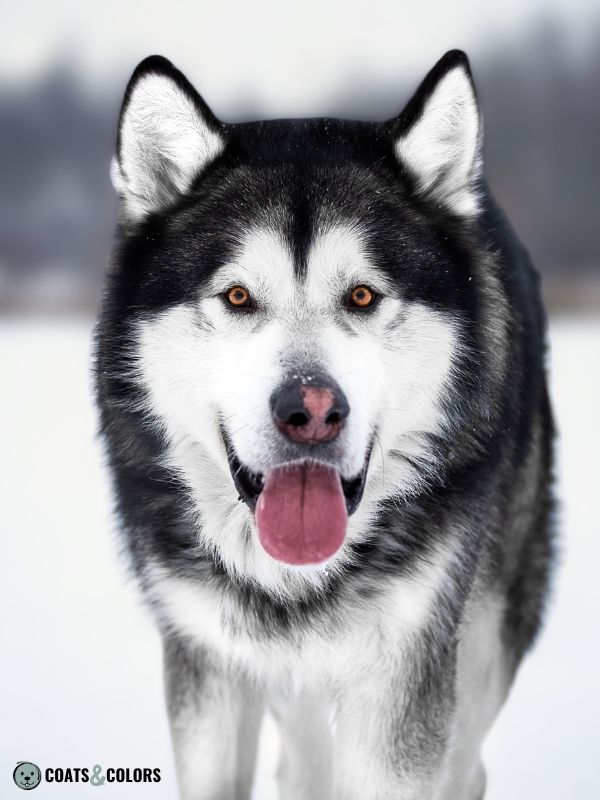
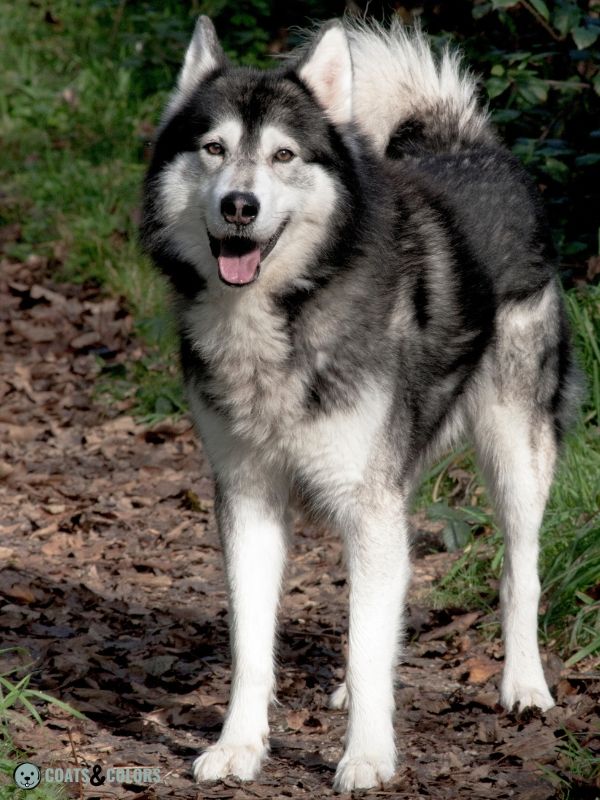
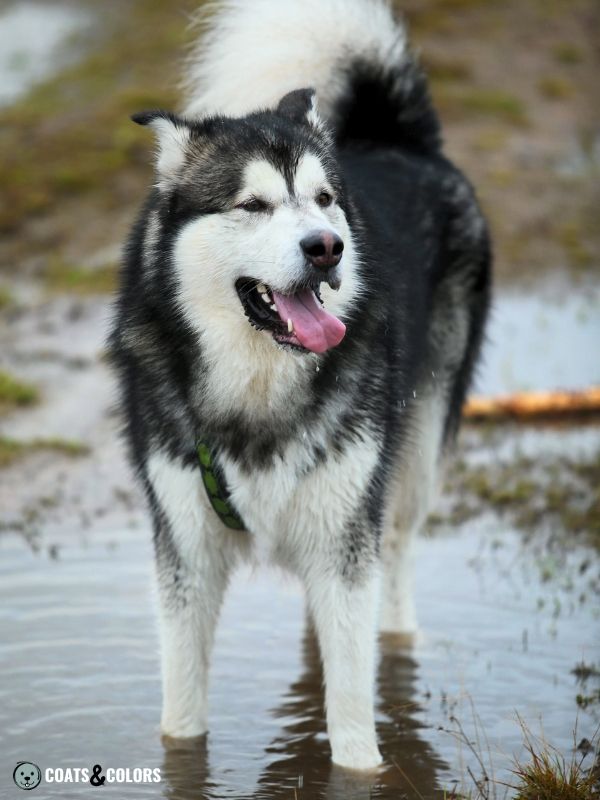
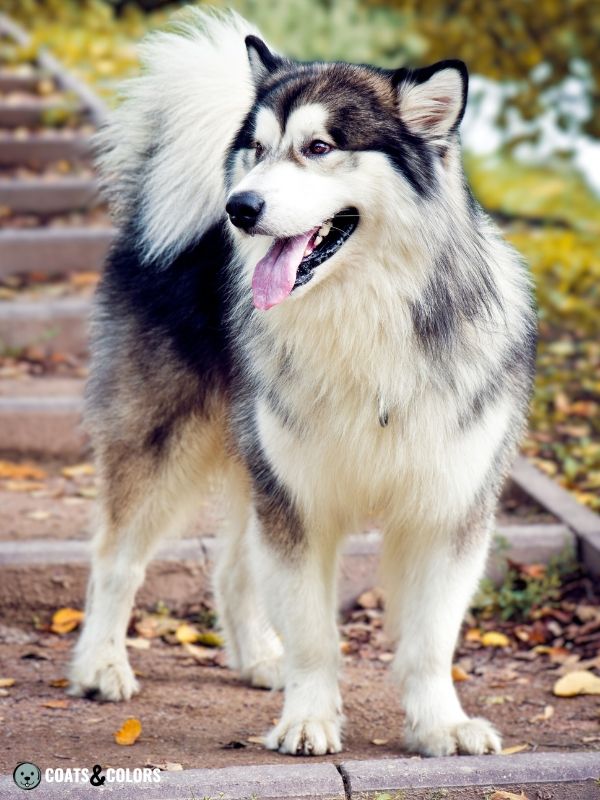
In genetic terms, Alaskan seal & white is a combination of a black-based (B/- D/-) black & tan (ky/ky at/-) pattern altered by the effects of northern domino (eA/-). Domino lowers the amount of eumelanin and increases the amount of phaeomelanin in the black & tan pattern.
In Alaskan Malamute colors, seal & white is a breed-specific term used for tan point domino.
Some darker seal & white Malamutes may resemble a black & white pattern from a distance. But seal & whites should already have large white eyebrows at birth.
That is, domino causes the tan points to grow bigger than usual and the tan pigment to lighten to shades of white or cream. Tan point domino usually comes with extensive pale face markings, a cap and sometimes a blackish bar running down the bridge of the nose.
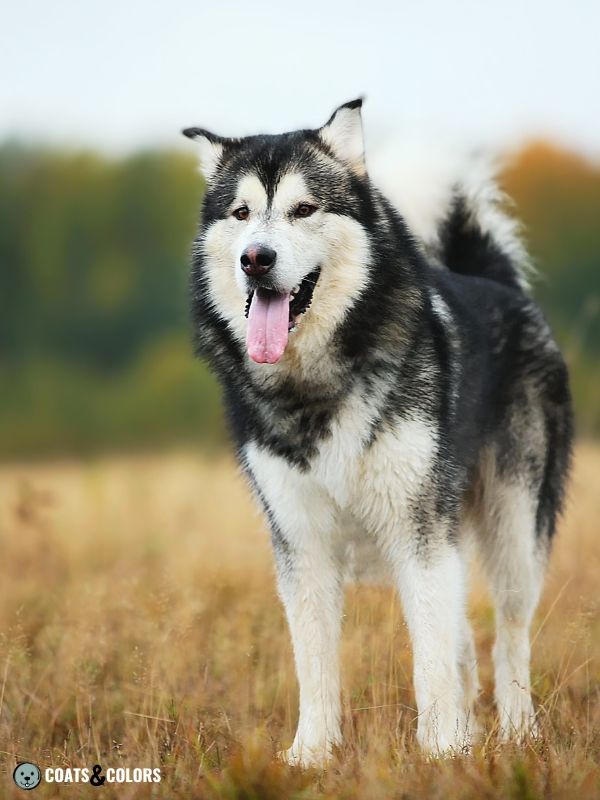
Alaskan seals can have some shades of gold or red on their legs, ears or tail just between their pale domino underside and the color on the upper body. These markings are called trimmings in Malamutes.
Seal & white dogs have black or black-tipped guard hairs since domino can add silver hair banding. Many dark seal & whites keep solid black hairs on their back but will always have black reduced from their facial pattern.
One of the most obvious signs is the very pale white or cream undercoat in seal & white dogs. Overall, seal looks much lighter in comparison to black and it lacks the defined black masking pattern of black & white dogs.
Sable & White Alaskan Malamute

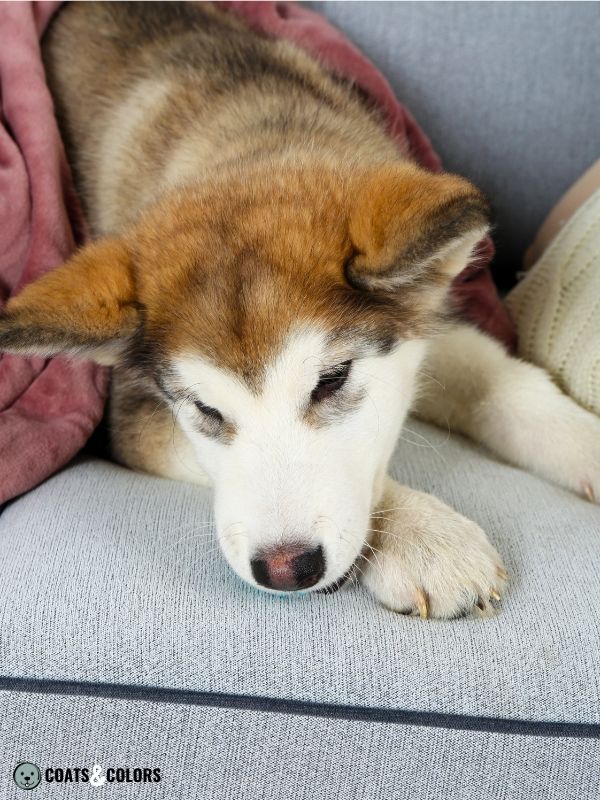
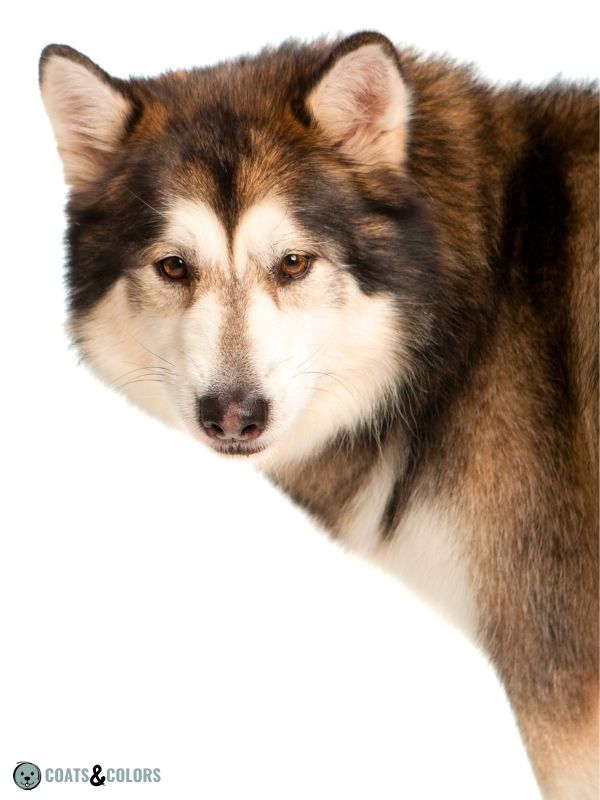
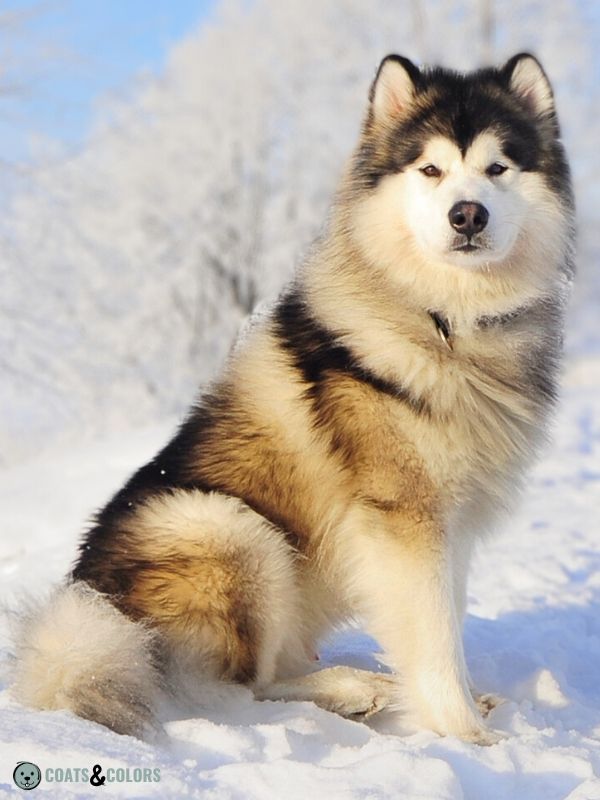
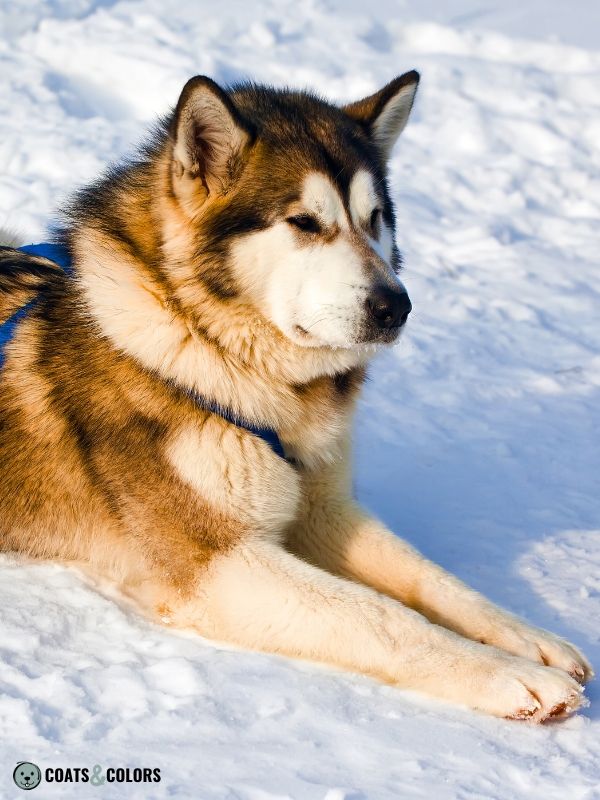
Sable & white is a breed-specific Malamute term mostly used for gray or seal patterns with a richer phaeomelanin intensity. Dogs have black or banded hairs with yellow/peach/orange/red undercoats, facial markings, hair bands or trimmings.
Whatever modifiers reduce the pheomelanin intensity in dogs with other patterns, is not there in sable & white Malamutes. Instead, their phaeomelanin pigment keeps a more intense color.
If you look at many dogs, there is a gradual transition from a light yellow tan in sable & whites to the light cream pigment found in normal gray or seal patterns. This leaves somewhat of a gray area.
Of all the Alaskan Malamute colors, sable & white is one of the most diverse. That is, sable is just a term used for about any dog with a decent amount of non-pale pigment. But depending on the actual pattern and amount of black hairs a particular dog has, some patterns are much darker than others.
Just “sable” often refers to a gray & white dog with reddish phaeomelanin. A much darker seal & white dog with reddish markings is called “seal sable” or “dark sable“.
But about any pattern can come with sable color, e.g. “agouti sable“, “black sable“, etc.
Some people tend to mistake a red & white (with brown eumelanin) for a sable & white (with red phaeomelanin). If you are confused you can learn all about pigment types here.
Red and sable are seperate traits in this breed. A dog can even express both at the same time (brown eumelanin and red phaeomelanin) which would make him a red sable. But most sable & white dogs have a black-based pattern and can easily be recognized by their black nose pigment.
Please note, that agouti, black, gray or seal dogs can have sable trimmings. This refers to areas with reddish pigment around the line where the mantle color meets the lighter points on the lower body. But darker trimmings on a dog with otherwise pale phaeomelanin doesn’t count as sable.
Silver & White Alaskan Malamute

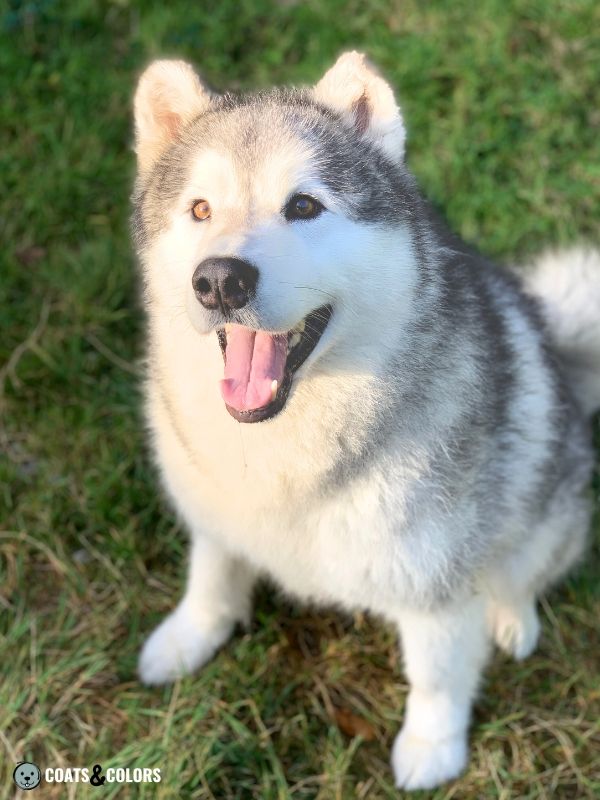
Silver & white is a breed-specific Malamute term used for dogs with light gray guard hairs, minimal black tipping and white undercoat. In genetic terms, it is believed that at least some of these dogs might actually have a shaded sable (ky/ky E/- Ays/-) pattern.
Keep in mind, that when we talk about the genetic term shaded sable we mean the Ays/- allele at the A-Locus series and not what Malamute folks call sable (any pattern with red phaeomelanin)!
Silver & white was thought to be just a light version of agouti domino (gray & white or ky/ky eA/- aw/- in this breed). And sure, from a phenotypic viewpoint, there is some overlap between the darkest of silvers and the lightest of grays.
Nonetheless, breeders figured out that not all silver & white Malamutes are gray. That is, some silver & whites can produce non-domino puppies (which are E/- at the E-Locus). So some silver & white dogs can’t actually be gray or eA/- themselves, otherwise they wouldn’t have an E allele to pass on.
The sable trait has not yet been verified to occur very often in this breed[4]. But true silver & white Alaskan Malamutes, sure enough, seem to express a shaded sable pattern.
However, shaded sable can vary from very few to very many black-tipped hairs in adult coats. The sable trait produces a distinctive pattern, but darker versions can easily be mistaken for light gray.
But there are some differences:
Silver & white puppies may look almost white at birth or have a very pale buff color. They have an obvious lack of black masking on the face and are often “open faced”. Some have hints of black eye shadow but none have a black nose bar.
Their guard hairs are very light gray with minimal black tipping. As puppies, they may have a dorsal stripe with more black-tipped hairs along their topline. Intense puppy shading is very typical for this pattern and may later clear to some degree.
As adults, true silver & whites have a very pale silvery color with white undercoat, a white hair base with some black hair tips around the head, back, torso or tail. They have white legs and their face markings are often reduced to white with a silvery cap and little to no gray eye shadow markings.
Silver & white dogs may carry agouti (Ays/aw) or tan points (Ays/at) causing an overall more “dark silver” looking pattern. And there is also the possibility of a dog being shaded sable domino (eA/- Ays/-) which could further delete much of the already sparse black hair tipping.
In fact, the effect of domino on minimally shaded sable patterns can delete most of the black from the pattern and has been shown to cause almost solid cream or white coats in other breeds.
In some cases, domino sable can create a pattern that resembles a white dog (but these dogs will still have some puppy shading or stray black hairs which is impossible in true white Malamutes).
In theory, any silver Mal can have brown or blue pigment in its hair tips instead of black which would further lighten the contrast between its white undercoat and its minimal pattern.
Red & White Alaskan Malamute
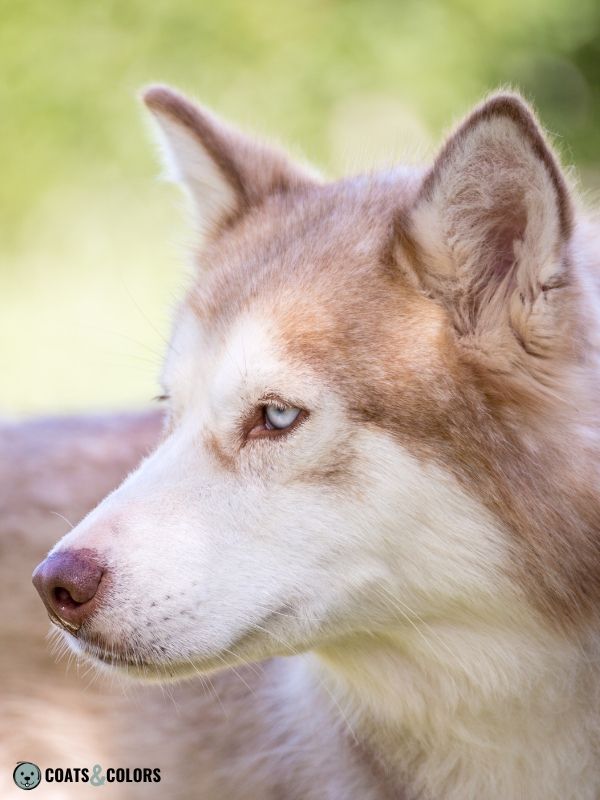
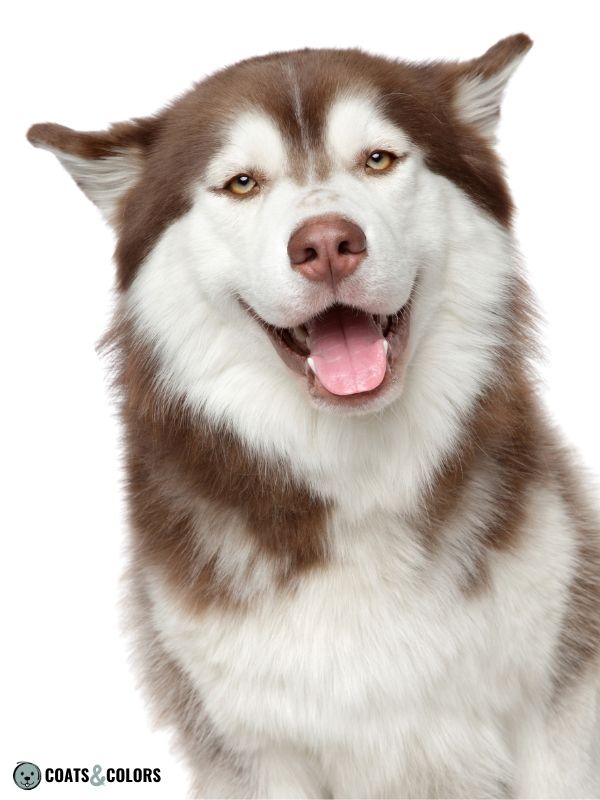
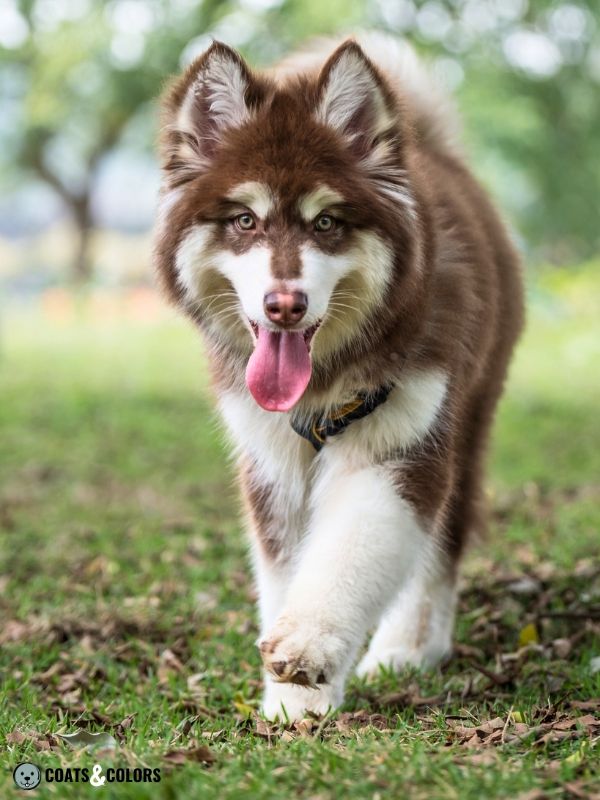
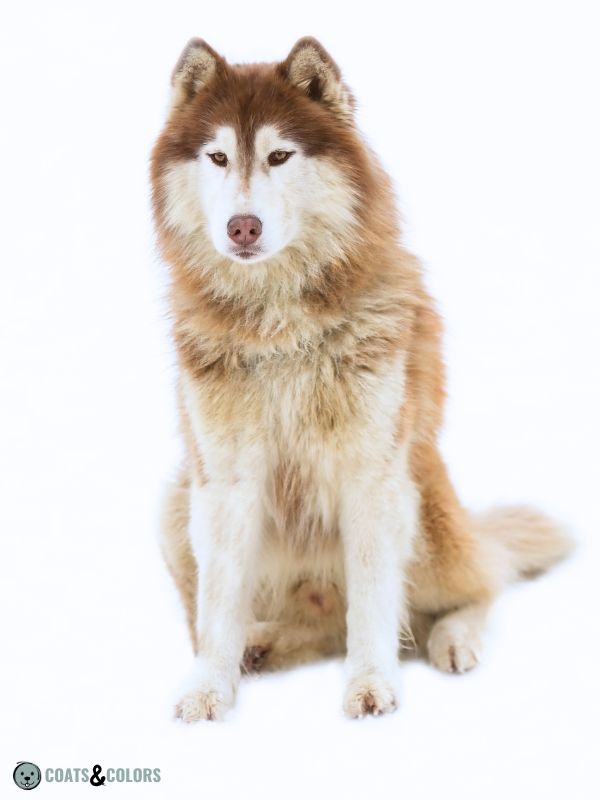
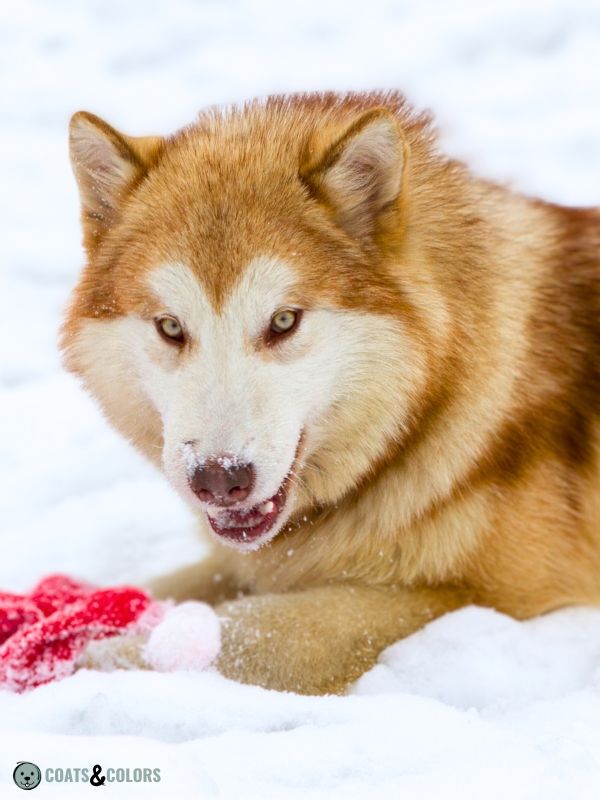

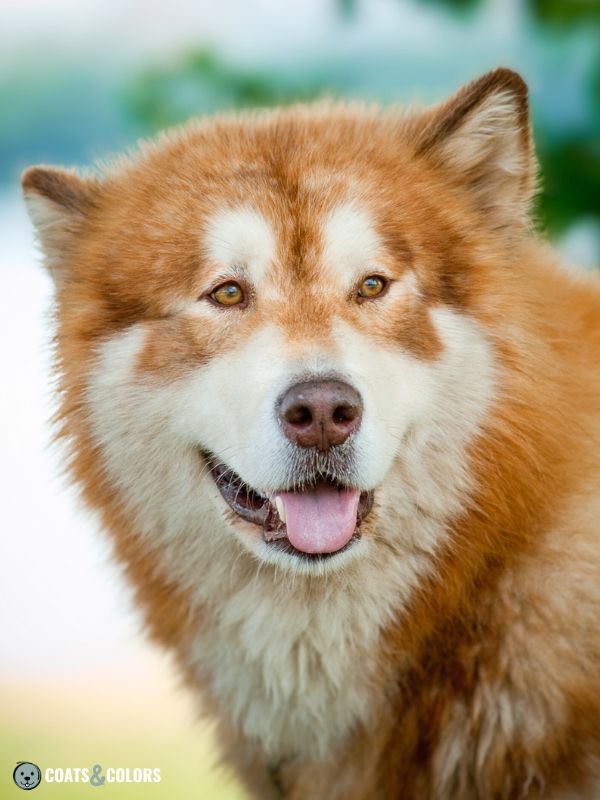
Red & white is a breed-specific Malamute term used for any pattern with brown eumelanin (b/b). Other breeds call this chocolate or liver to better distinguish it from red phaeomelanin.
The Alaskan Malamute color red & white can come in a variety of shades from more orangey or light brown to chocolate brown or a rich and intense mahogany brown.
Red Alaskan Malamutes can not produce black pigment will never have a black hair on them. All dark markings, banding or tipping in a given pattern is turned into brown.
This also affects the skin, lip, nose and eye color of Alaskan Malamute red and white. Dogs will have brown nose leather, brown eye rims and lips and often have more yellow or amber eyes.
This also sets Alaskan Malamute brown and white apart from black-based sable & white dogs. The latter will have black noses and black-tipped guard hairs.
In Alaskan Malamute colors, red & white coat can apply to any pattern. If an Alaskan Malamute appears to be more beige, light brown, or dark brown mostly depends on its underlying pattern:
- Brown-based agouti is called “Agouti Red“.
- Brown-based agouti domino/gray is called “Light Red” or “Gray Red“.
- Brown-based tan point is called “Mahogany Red“.
- Brown-based tan point domino/seal is called “Dark Red” or “Seal Red“.
Even silver or white dogs can have a red nose.
Blue & White Alaskan Malamute
Blue refers to diluted black eumelanin (B/- d/d). However, this trait is rare in Alaskan Malamutes.
Blue will turn all the eumelanin on an individual dog to a slate-looking gray. Meaning, affected dogs have blueish hair tipping or banding, gray skin pigment, gray eye rims, gray lips and a gray nose.
The breed standard does not consider this and demands all but the brown-based dogs should have a black nose. But this is not possible for blue dogs since they can not produce black pigment.
The eye color in blue Malamutes is often a pale yellow-green or hazel, especially seen in puppy eyes.
Just like brown pigment, blue eumelanin can affect any pattern a dog might have:
- Blue-based agouti is called “Blue Agouti“.
- Blue-based agouti domino/gray is called “Light Blue“.
- Blue-based tan point is called “Blue & White“.
- Blue-based tan point domino/seal is called “Dark Blue“.
Even silver or white dogs can have a blue nose.
White Alaskan Malamute

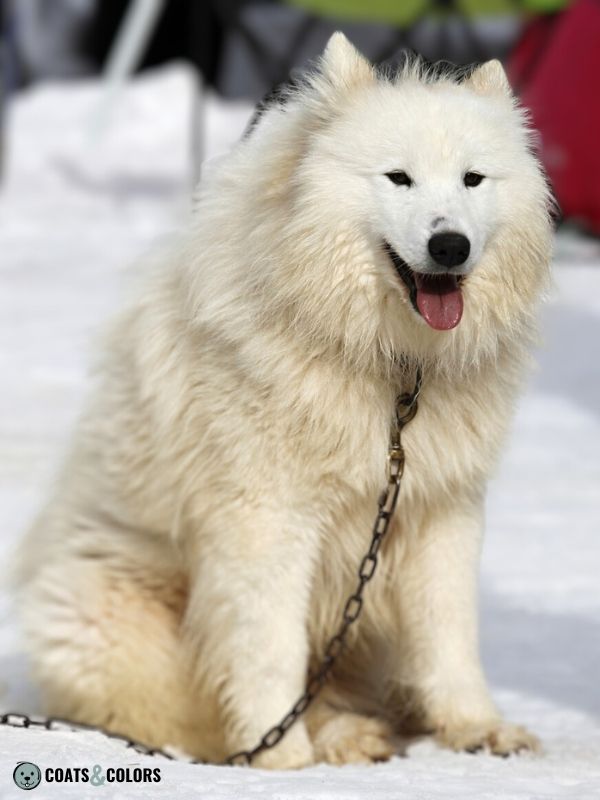
An all white Alaskan Malamute is born without any black shading. That is, white Malamutes can not produce eumelanin. In genetic terms, these solid white dogs are recessive red (e/e) with white phaeomelanin intensity.
Although pure white Alaskan Malamutes look very pale they actually do produce phaeomelanin in their coats which just has been turned to white or off-white through selective breeding.
That is why none of these dogs are prone to deafness or blue eyes which would be not too uncommon in truly non-pigmented white dogs due to a lack of pigment.
Dogs should have white guard hairs and a white undercoat. But in many cases, white Alaskan Malamutes have some ear lacing or shades of cream, pale yellow or red in their cap or dorsal stripe.
Most white Alaskan Malmute have a black nose that typically fades to a flesh-colored pink which is quite normal for dogs with this pattern. Other breeds call this a snow nose (a term that Malmautes already use for the pink stripe on the nose of domino dogs).
In rare cases, white might be combined with brown or blue eumelanin. However, since white dogs can not have eumelanin in their coat, this can only be seen in their nose and skin pigment.
Non-Standard Alaskan Malamute Coat Colors
Non-standard colors can happen in any dog breed. Some breeders avoid them like the plague, others breed them for various reasons despite being considered undesirable.
Sometimes these non-standard colors occur by accident due to recessive alleles. Recessive traits will only be expressed in dogs that inherited a copy from each of their parents. But dogs with only one copy can carry and pass on these traits for generations.
And in other cases, a non-standard color is achieved by crossbreeding and introducing a non-standard trait on purpose.
Lilac Alaskan Malamute
Since there are dogs with brown eumelanin (“red”, b/b D/-) and dogs with diluted black eumelanin (“blue”, B/- d/d), there is also a possibility of producing a dog with both traits.
This would produce a dog with diluted brown eumelanin (“lilac”, b/b d/d) which is not specifically mentioned as a standard color but certainly occurs in the breed. This can make an Alaskan Malamute look beige or taupe.
The diluted brown pigment will appear a little duller and less vivid than on a non-diluted “red & white” dog. Their skin, lip, nose and eye rim pigment will also be affected and be a lighter and greyish shade of brown.
Lilac pigment will affect any eumelanin in a given coat color pattern. Possible pattern include “lilac agouti“, “lilac & white“, “light lilac” or “lilac gray” as well as “seal lilac” or “dark lilac“.
The eye color in lilac Malamutes typically ranges from yellow to yellow-green. But puppy eyes can be very pale and appear greenish-blue before pigment starts to fill in.
Black Alaskan Malamute
Black is not s standard color in Malamutes, but the recessive black allele is present in the breed.
Historically, this color does not occur in Alaskan Malamutes. Although the trait been present in the small founder population of this breed, it is more likely that it was introduced at a later time.
The breed standard very clearly states that the only solid color an Alaskan Malamute can have is white.
In Nordic breeds, recessive black dogs do not always have solid black coats, especially when paired with domino. And given the rarity of this trait to begin with, it is very unlikely to produce a black Malamute by accident.
Alaskan Malamute Coat Colors Overview
The breed standard describes all the different traits a typical Alaskan Malamute should have. This includes his conformation and temperament but also the coat texture and color.
The major kennel clubs often use their own standards provided by their affiliated breed club. These standards are usually similar in their general outline but can differ in many details like coat color.
Let’s see what breed clubs have to say about the accepted Alaskan Malamute coat color patterns[1-3]:
| AKC | FCI | KC | |
|---|---|---|---|
| Agouti & White | ✅ | (✅) | ✅ |
| Wolf Grey & White | (✅) | (✅) | ✅ |
| Wolf Sable & White | (✅) | (✅) | ✅ |
| Gray & White | ✅ | ✅ | ✅ |
| Sable & White | ✅ | ✅ | ✅ |
| Black & White | ✅ | ✅ | ✅ |
| Seal & White | ✅ | (✅) | ✅ |
| Silver & White | ✅ | (✅) | ✅ |
| Red & White | ✅ | ✅ | ✅ |
| Blue & White | ✅ | (✅) | ✅ |
| White | ✅ | ✅ | ✅ |
Parentheses indicate color names that are not mentioned in the breed standard without excluding them.
Alaskan Malamute Coat Color Genetics
A dog’s coat gets its colors from two pigment types called eumelanin and phaeomelanin. Different proportions of colors in a particular dog’s coat create different patterns.
But Alaskan Malamutes, like most dog breeds, can only produce some of all the possible colors. These are the genes and alleles involved in typical Alaskan Malamute coat colors and patterns:
| E-LOCUS | E = normal pattern eA = northern domino (will report as E if not tested for!) e = recessive red |
| K-LOCUS | ky = patterned |
| A-LOCUS | Ays = shaded sable (maybe) aw = agouti at = tan point a = recessive black (rare)[4] |
| B-LOCUS | B = black b = brown |
| D-LOCUS | D = normal pigment d = diluted pigment |
| S-LOCUS | S = no spotting sp = white spotting |
| M-LOCUS | m = non-merle |
Eumelanin Colors
Alaskan Malamute with standard colors mostly have black eumelanin (B/- D/D). But they can also have diluted black eumelanin called blue (B/- d/d) or brown eumelanin (b/b D/D).
Brown dogs are called “red” in this breed, which is technically incorrect.
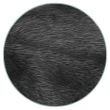
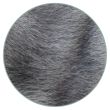
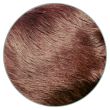
“red“
Phaeomelanin Intensity
The shades and intensity of phaeomelanin can vary greatly in Malamutes. While red or orange pigment can be seen in sable & whites or dogs with trimmings but most Malamutes produce a pale off-white phaeomelanin.
In fact, many Northern Dog breeds have been selected for lighter shades of phaeomelanin.
And ancient domino (eA) tends to further lighten this pigment type.
That is why so many Alaskan Malamutes tend to have light cream-white undercoats, pale hair bands or markings while only some express a more yellowish-orangey coat.
Some darker gold, buff, burnt orange or reddish Alaskan Malamute tan pigment is often seen in “trimmings” on the lower legs, ears, tail and cap just at the edge of patterned areas.
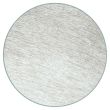
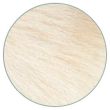
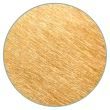
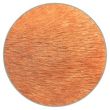

White Spotting
Yes, Malamutes do have white spotting (sP) and some may have Irish spotting (untestable).
It is just that they have been selected for a minimal white spotting pattern so their white markings often happen to be in or just alongside places that are already covered by white phaeomelanin or have been lightened by domino such as the paws or muzzle.
This makes white spotting in Malamutes hard to spot.
The white on the lower parts of the body and face seen in most Malamutes is actually pigmented, just with very low intensity phaeomelanin lightened to cream-white or white by phaeomelanin modifiers and/or domino if present. But white spotting causes truly white areas that lack pigment.
The distribution of white spotting in Alaskan Malamutes is often minimal and can resemble Irish spotting, some dogs are believed to maybe even have real Irish markings.
Since breeders have also selected against a splash coat with white on the body, even homozygous piebald (sP/sP) Alaskan Malamutes tend to have very minor white markings.
Overall, any irregular white markings or markings going beyond what an Irish pattern can do have to come from piebald (sP). This includes any large white collars, splashing, nape spots as well as wide blazes or solid white legs.
Since true white face, chest and collar Markings markings are rare in Malamutes, some patterns got their own name:
A “collar” is a band of white hair around the neck.
A white spot at the nape of the neck or on the withers is called a “withers spot“.
A “blaze” refers to a stripe of white coat that extends from the pointy end of the cap up the forhead. Most blazes are short and narrow, but they can get quite large or irregular.

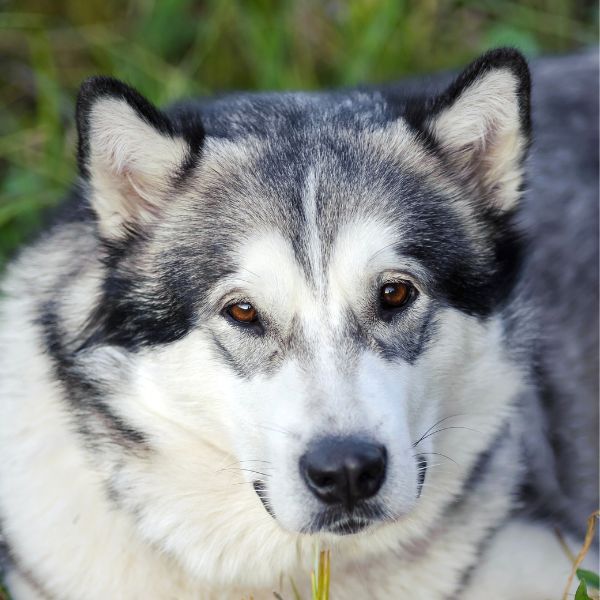

A small white spot on the forehead that is not connected to a blaze is called a “star“.

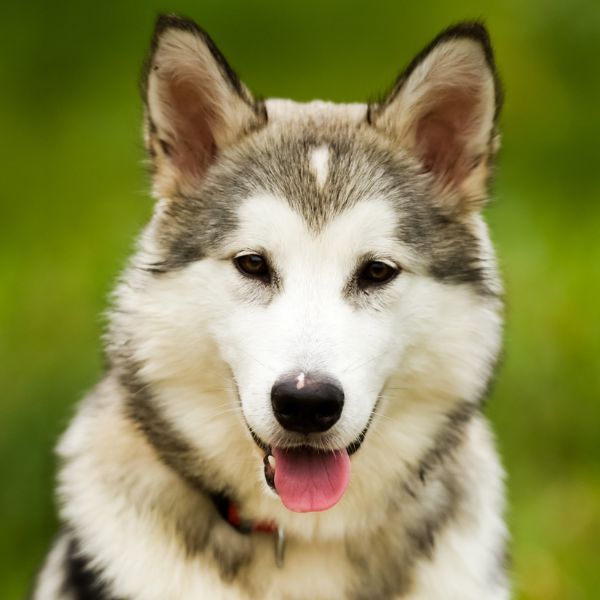
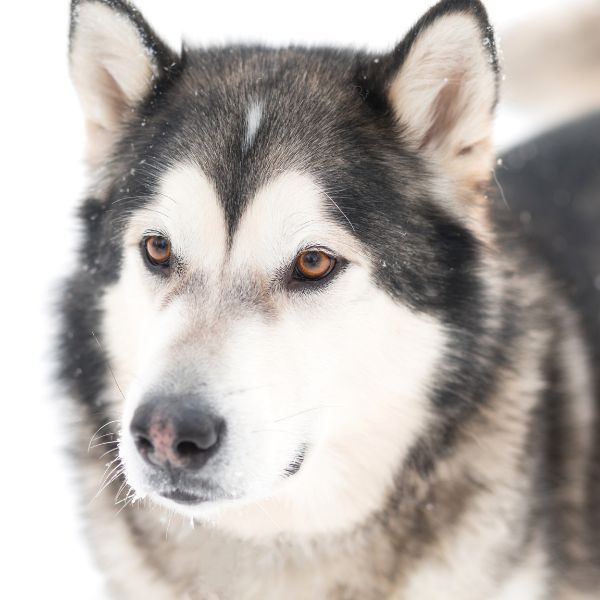
If a dog has a band of dark-pigmented hair around its white chest, this is a “necklace“.

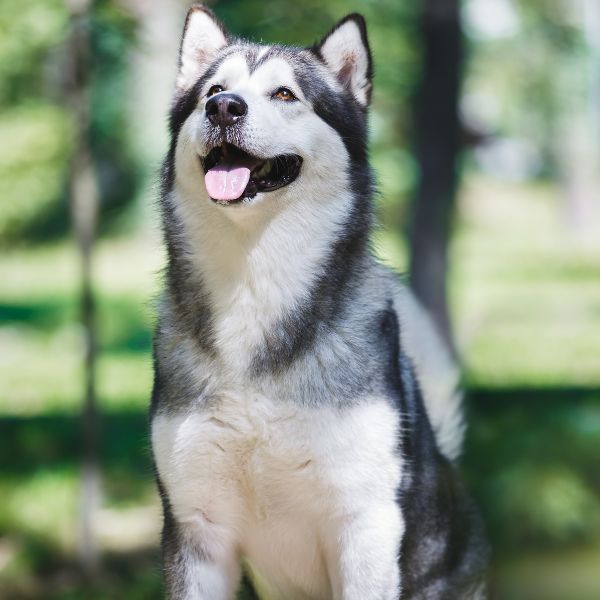
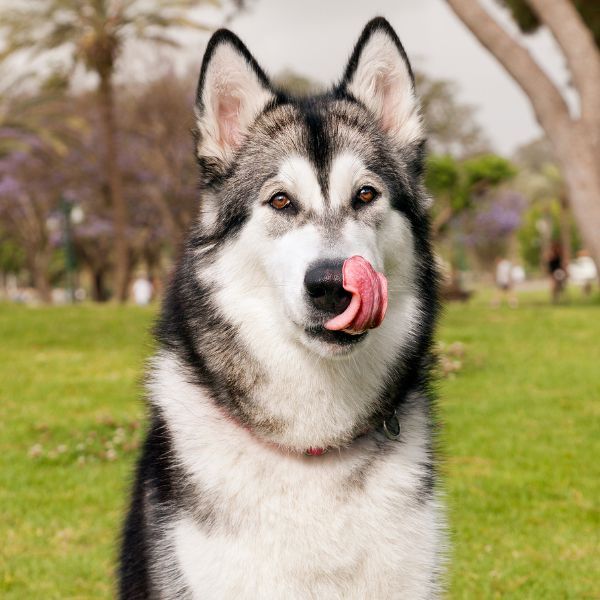
Two partially pigmented band of dark hair form a white marking resembling spread wings is an “eagle“.
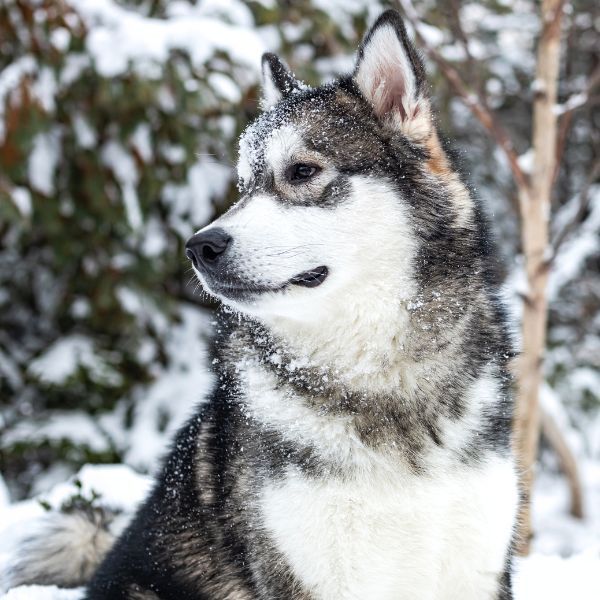
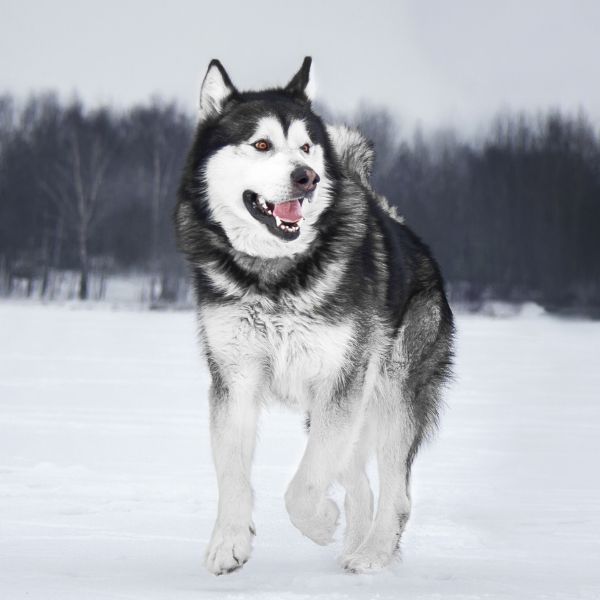
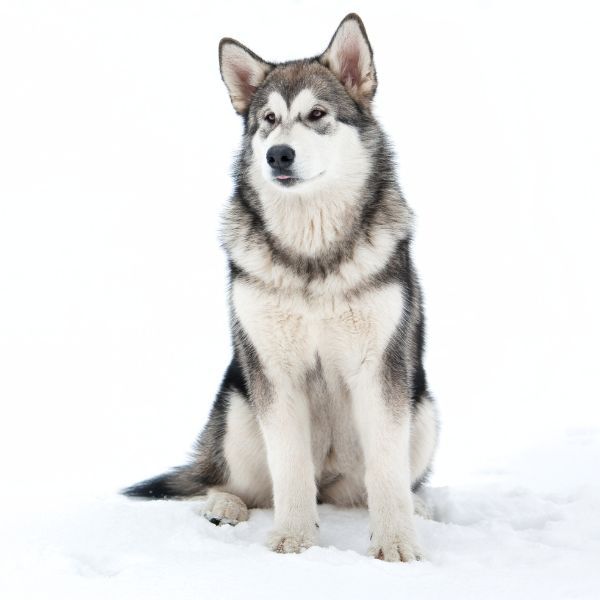
Dogs without a necklace have a “white chest“.
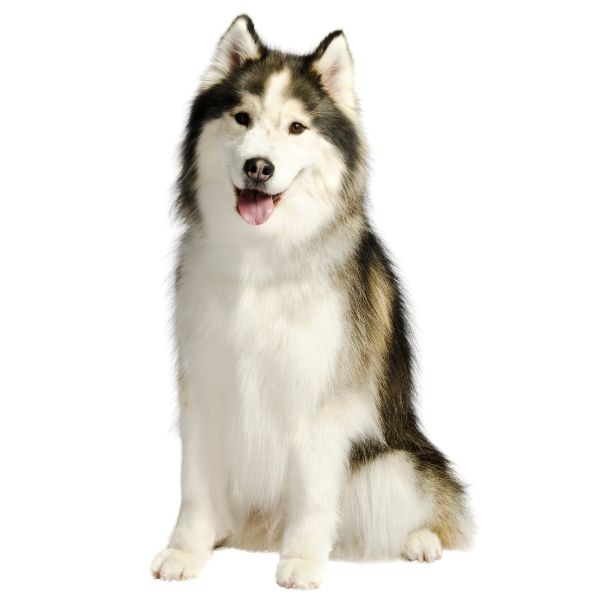
Color Patterns
The accepted patterns in a dog breed describe the distribution of colors in a dog’s coat. Dogs can be solid-colored (in the case of Alaskan Malamute colors, this is only true for solid white dogs) or have a patterned coat with more than one color.
While pet owners seem to prefer the more vibrant looks of black & white or red & white Malamutes, gray & white or sable & white seem to be more predominant in the show ring.
Breed standards almost always use breed-specific and purely descriptive terms. It’s sometimes on us to translate breed standard terminology into more universal genetic terms.
And that can be quite tricky… Sometimes the same term is used for colors that are caused by different genes. And in other cases, genetically similar phenotypes have many different names.
Malamutes are a prominent example of a dog breed with northern domino. This gene variant of the E-Locus series increases pheomelanin and decreases eumelanin in any given pattern.
All but the solid white Alaskan Malamutes have a pattern with gray, black, orange, tan, or brown hairs on their mantle. If domino is present, it can cause a light undercoat, lighter coat on the lower body, white legs, white paws, or white facial markings. And Mals can have white spotting on top of that.
Dogs can have a dark or light pattern to begin with. And domino can have a heavy or moderate effect on these patterns. So there is a possibility for dogs to be registered under the wrong color. Sometimes you have to look at puppy pictures, study a dog’s pedigree or do genetic testing to be sure.
| Color Term | Genotype |
|---|---|
| Agouti & White (Agouti) | ky/ky E/- aw/- B/- D/- + light phaeomelanin |
| Gray & White Wolf Gray & White (Agouti Domino) | ky/ky eA/- aw/- B/- D/- + light phaeomelanin |
| Black & White (Tan Point) | ky/ky E/- at/- B/- D/- + light phaeomelanin |
| Seal & White Alaskan Seal (Tan Point + Domino) | ky/ky eA/- at/- B/- D/- + light phaeomelanin |
| Sable & White (Any Pattern) | ky/ky E/- aw/- (agouti) or ky/ky eA/- aw/- (gray) or ky/ky E/- at/- (tan point) or ky/ky eA/- at/- (seal) + red phaeomelanin |
| Silver & White (Shaded Sable) | ky/ky E/- Ays/- ky/ky eA/- Ays/- (?) + light phaeomelanin |
| Red & White (Any Pattern + Brown Eumelanin) | b/b |
| – Agouti Red | ky/ky E/- aw/- b/b D/- |
| – Light Red/Gray Red | ky/ky eA/- aw/- b/b D/- |
| – Mahogany Red | ky/ky E/- at/- b/b D/- |
| – Dark Red/Seal Red | ky/ky eA/- at/- b/b D/- |
| Blue & White (Any Black Pattern + Eumelanin Dilution) | d/d |
| – Light Blue | ky/ky eA/- aw/- B/- d/d |
| – Dark Blue | ky/ky eA/- at/- B/- d/d |
| White | e/e + light phaeomelanin |
Alaskan Malamute Nose and Eye Colors
Different proportions of colors in a particular dog’s coat create different patterns. And a dog’s coat gets its colors from two pigment types called eumelanin and phaeomelanin.
These pigment types can both come in different shades. But Alaskan Malamutes like most dog breeds can only produce some of all the possible colors.
Eye and Nose Colors in Malamutes
All black-based Alaskan Malamute coat colors produce brown eyes, a black nose and black pigment on their lips, eye rims, paw pads or nails.
All brown-based or “red” Alaskan Malamutes, however, often have hazel or light brown eyes and will have a brown nose and brown skin pigment on their lips, eye rims, paw pads or nails.
And blue dogs (with eumelanin dilution) have gray skin and nose pigment and tend to have yellow eyes, sometimes even a little greenish.
Puppy eyes (especially in brown or blue dogs) can look very blueish but will darken in color with age.
Alaskan Malamute eye colors should be dark although some dogs tend to have lighter eyes. Blue eyes are a fault in this breed. They don’t have the “blue eye trait” Huskies are known for!
The majority of Malamutes express a domino pattern, they also often have a light or flesh-colored vertical streak on the nose (“snow nose”), which is a trademark of domino patterns.
White Alaskan Malamutes are recessive red with low phaeomelanin intensity. A typical trait seen in dogs with this pattern is fading nose pigment, often called snow nose.
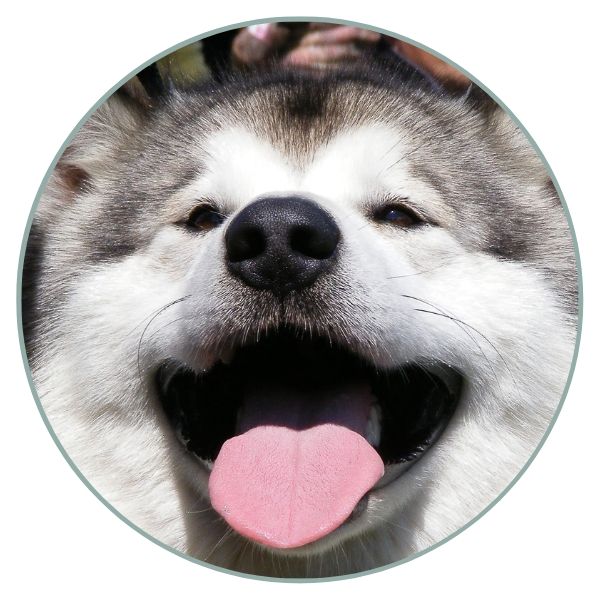

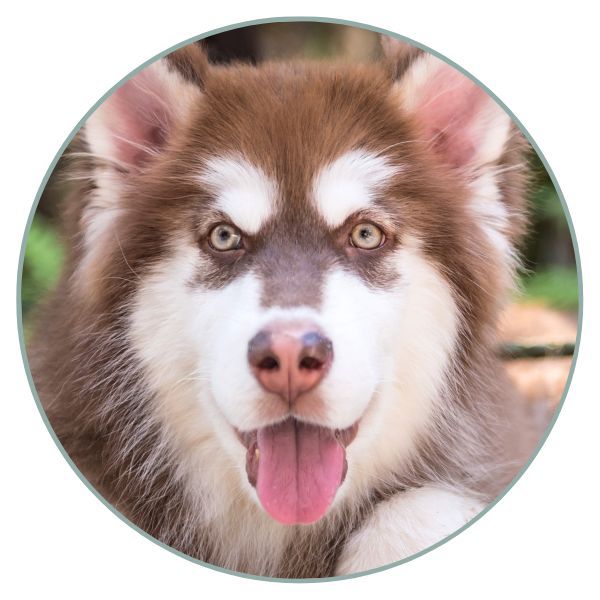
Alaskan Malamute Coat Types
The Alaskan Malamute standard coat type is characterized by its thickness and coarse texture.
The outer guard hairs, which should never be long and soft, can vary in length. Meanwhile, the undercoat is dense, 1-2 inches long with a woolly texture.
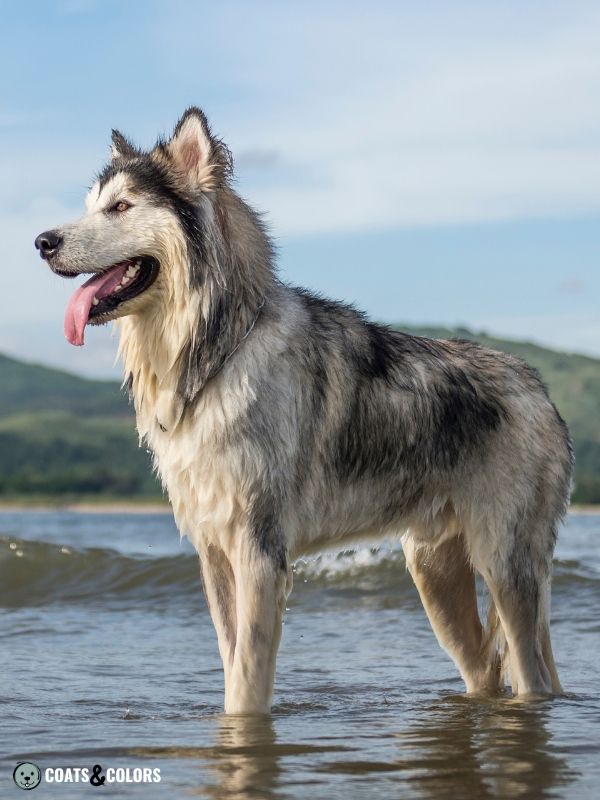
The coat’s length is relatively short to medium along the sides of the body, but it can become longer, about 3-4 inches, in some areas such as the neck, back, rump and tail.
During the warmer months, Malamutes typically have a somewhat shorter and less dense summer coat.
Genetically, Malamutes should be smooth-coated without any feathering on the legs or ears. But modifiers can alter coat texture or density within certain parameters.
Other Coat Types in Alaskan Malamute
Neuter coat is a thing and can also get overly fluffy and prone to matting.
On top of that, quite a few Alaskan Malamutes seem to have at least one gene variant for long coat[4].
Long coats (l) are recessive to short coats (L), so one has to pair two carriers (L/l) to produce a long-haired woolly Alaskan Malamute (l/l). But if this is still a standard coat type is cause for debate.

Longhaired Malamutes have lots of thick undercoat and long feathering on their legs, ears and tail. But Alaskan Malamutes are a spitz-type breed, their coats should stand off from the body.
If their coat is soft and fluffy, hair drapes down the sides or parts down the middle of the back, even fanciers of long-coated Mals would consider it as overly long.
One last thing: Did you know that some Malamutes even have a variant for curly coat[4]? But I don’t recall ever seeing a curly Malamute… Have you?
FAQ
Can Malamutes Have Blue Eyes?
No, Alaskan Malamutes do not have blue eyes. They do not have any of the traits that typically cause blue eyes in dogs, such as extensive white spotting, merle, or the blue eye trait that Siberian Huskies are known for. Malamute puppies may have gray-blue eyes, but these will darken with age.
Links
[1] American Kennel Club (AKC): Official Standard of the Alaskan Malamute (pdf)
[2] Fédération Cynologique Internationale (FCI): Alaskan Malamute Breed Standard (pdf)
[3] The Kennel Club (KC): Alaskan Malamute Breed Standard
[4] Dreger et al (2019). True Colors: Commercially-acquired morphological genotypes reveal hidden allele variation among dog breeds, informing both trait ancestry and breed potential. PLoS ONE. https://doi.org/10.1371/journal.pone.0223995
[5] Anderson et al (2020). Comprehensive genetic testing combined with citizen science reveals a recently characterized ancient MC1R mutation is associated with partial recessive red phenotypes in dog. Canine Med Genet. https://doi.org/10.1186/s40575-020-00095-7
[6] Nichole Royer (2007): Malamute Coat Color Genetics.
[7] Alaskan Malamute Club of America: Illustrated Standard and Coat Color Guide.
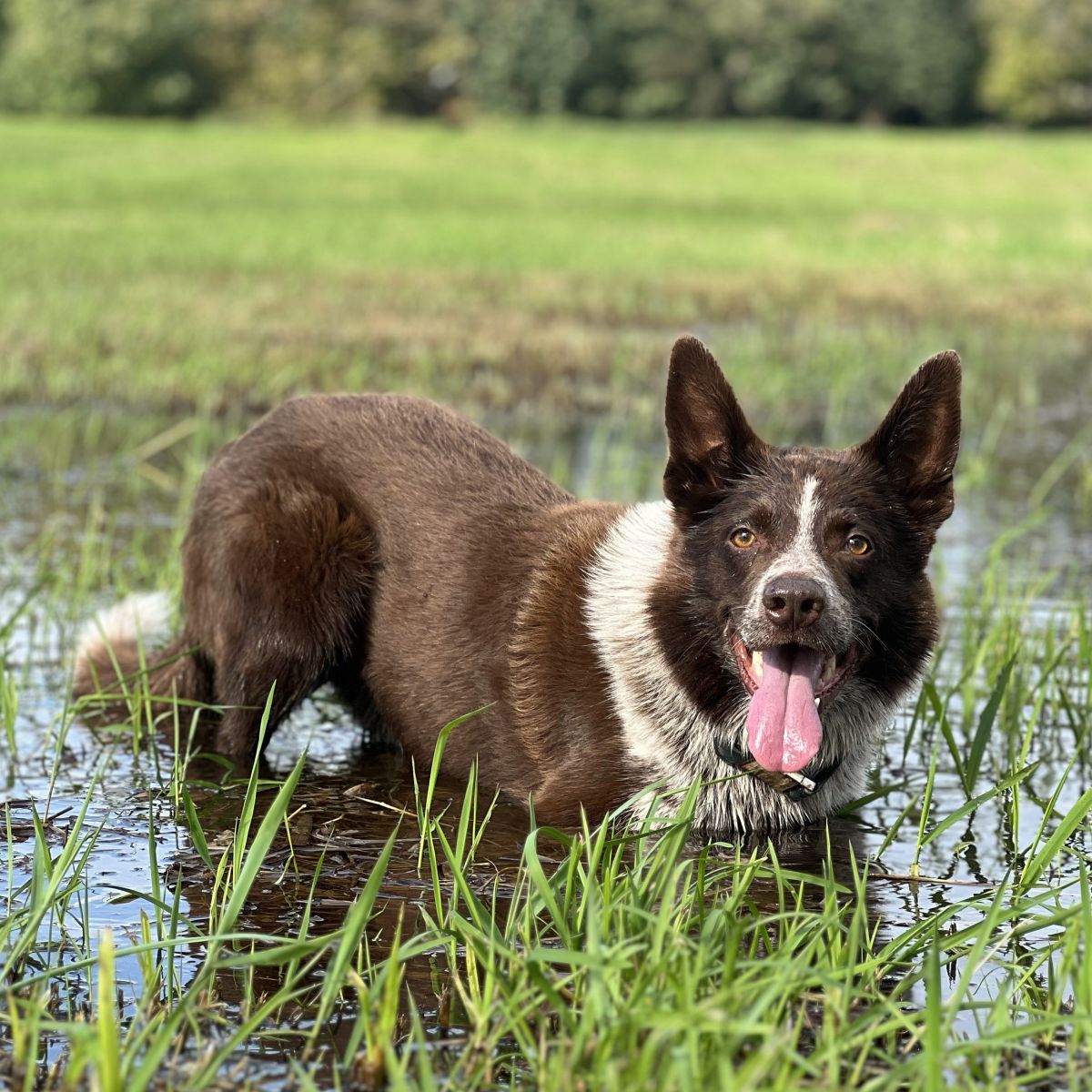
Hi! I’m Steffi. I am a biologist and a big time dog nerd. You are curious about coat color genetics? You’ve come to the right place! Read more.

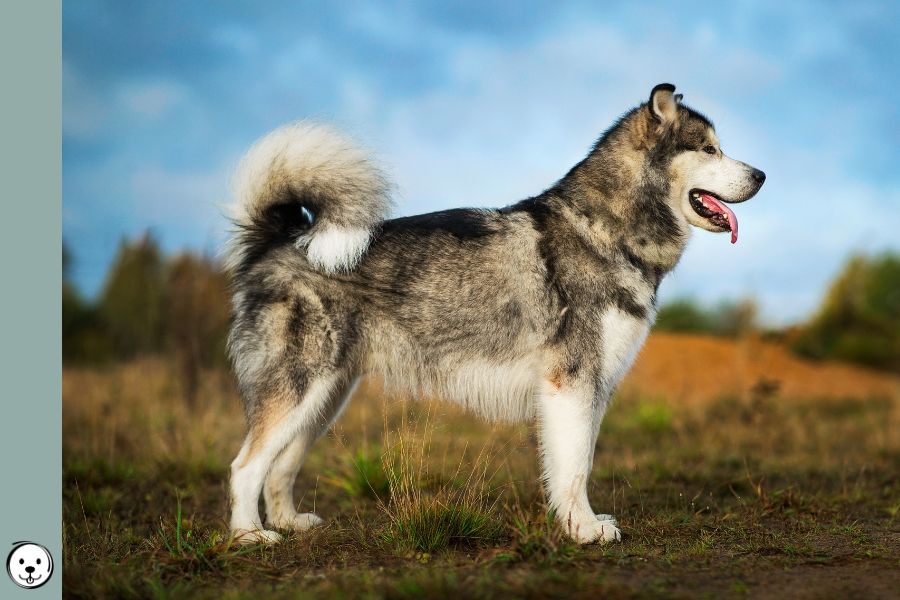
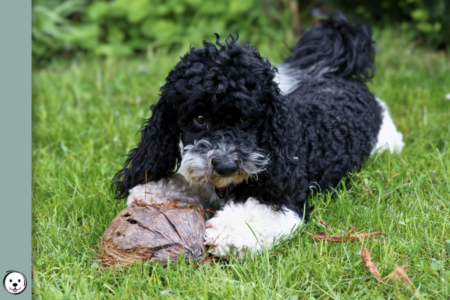



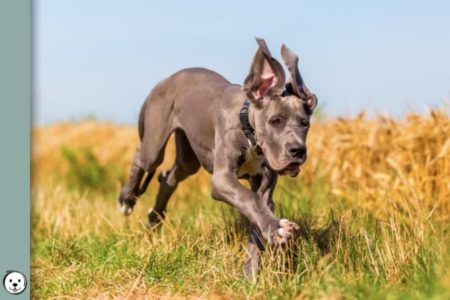
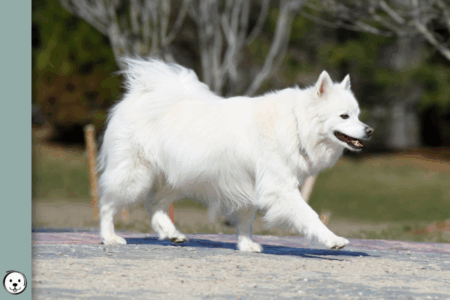
2 thoughts on “Alaskan Malamute Coat Colors”
Comments are closed.